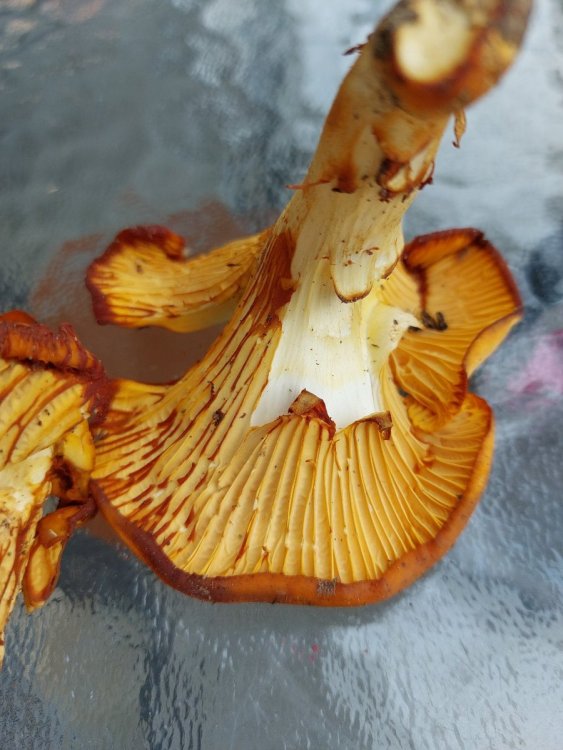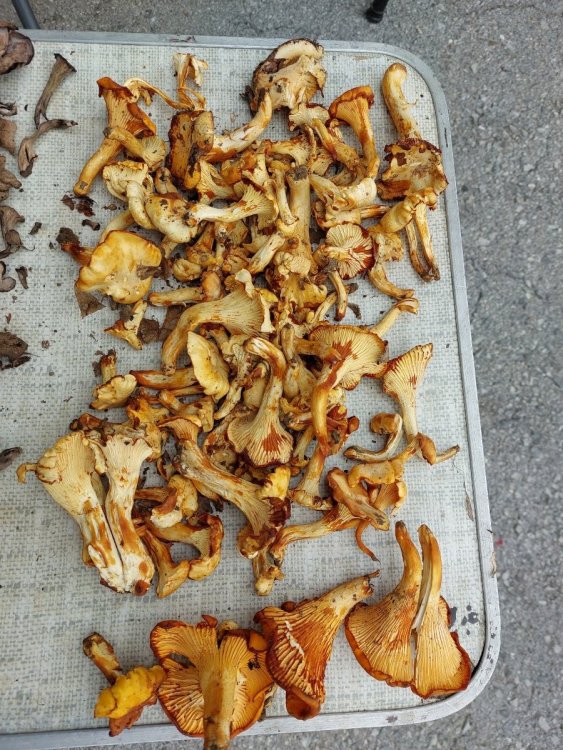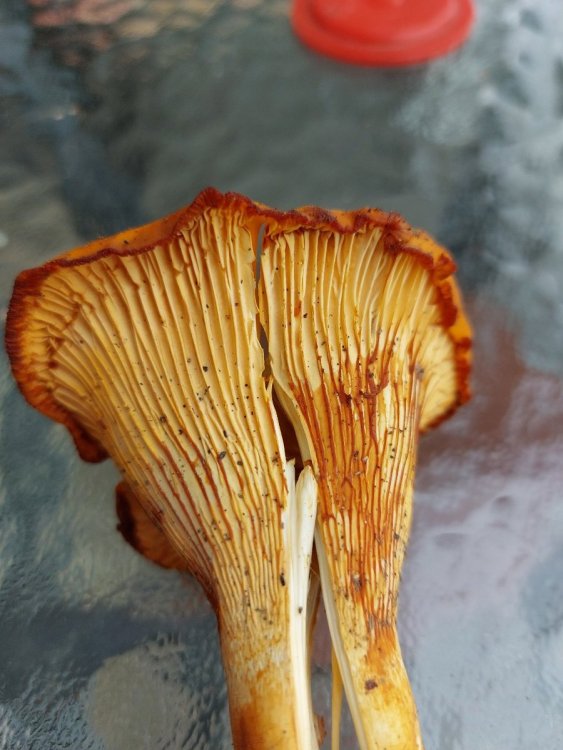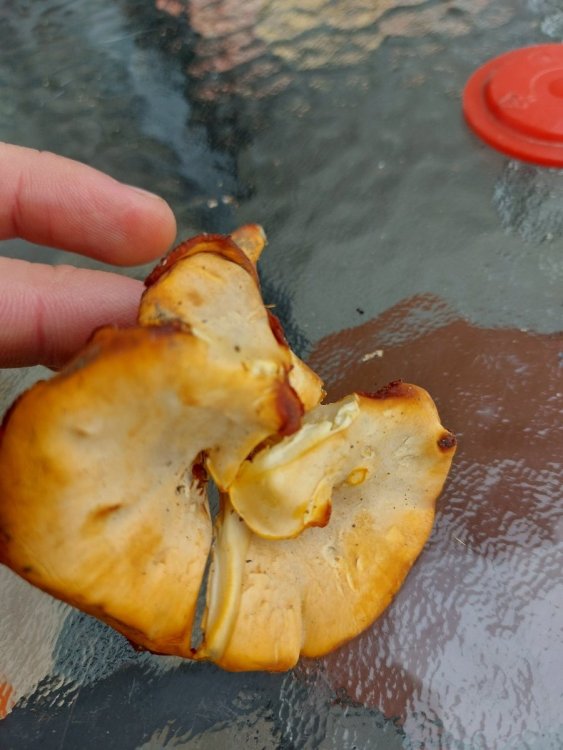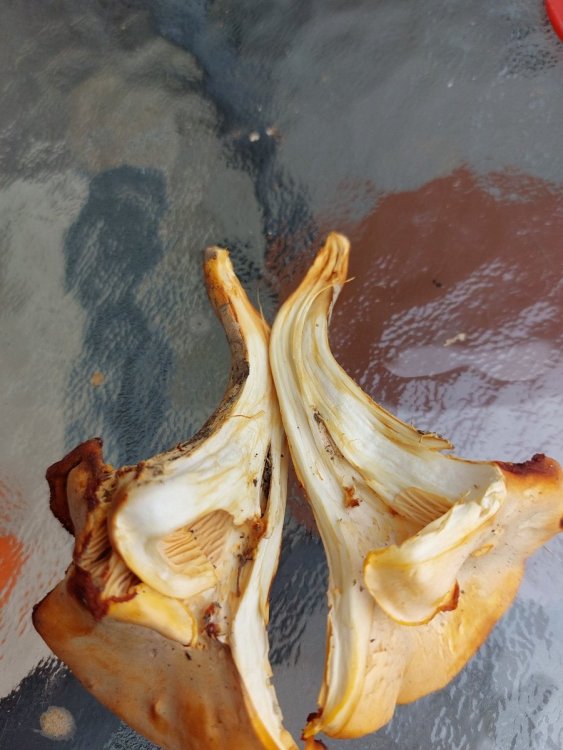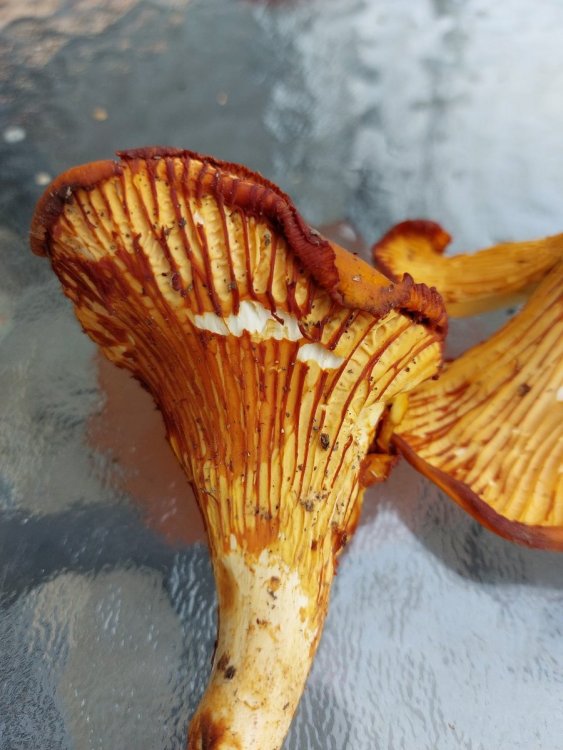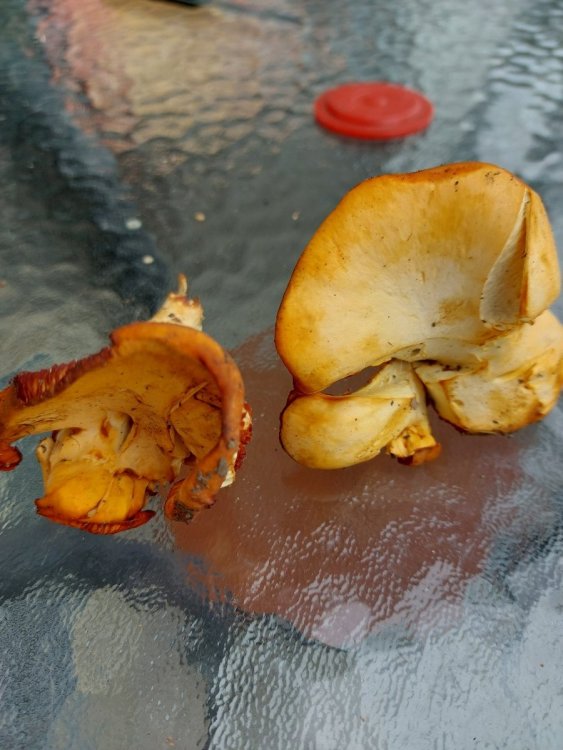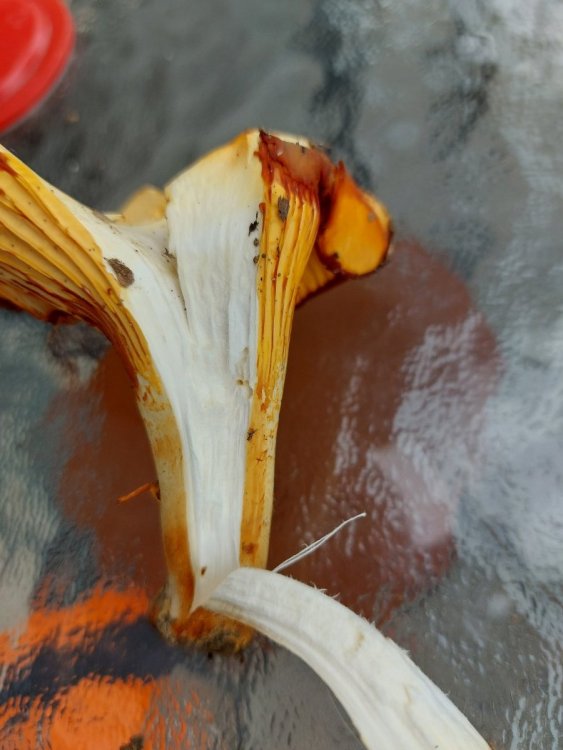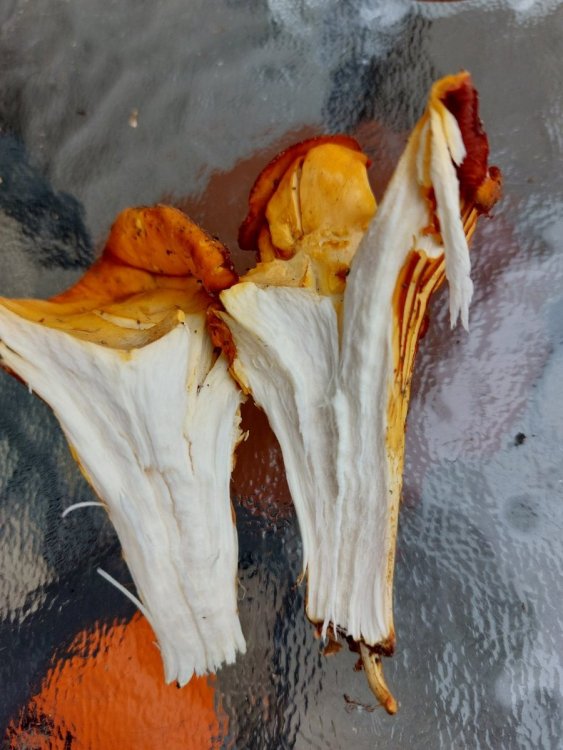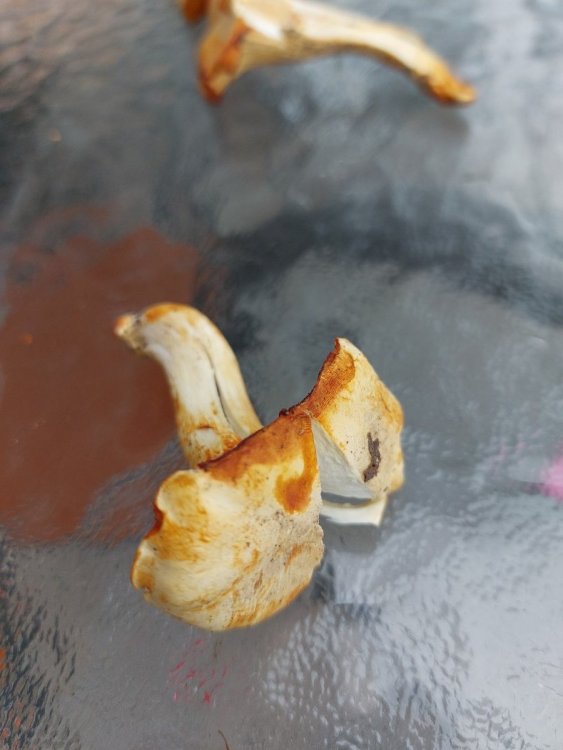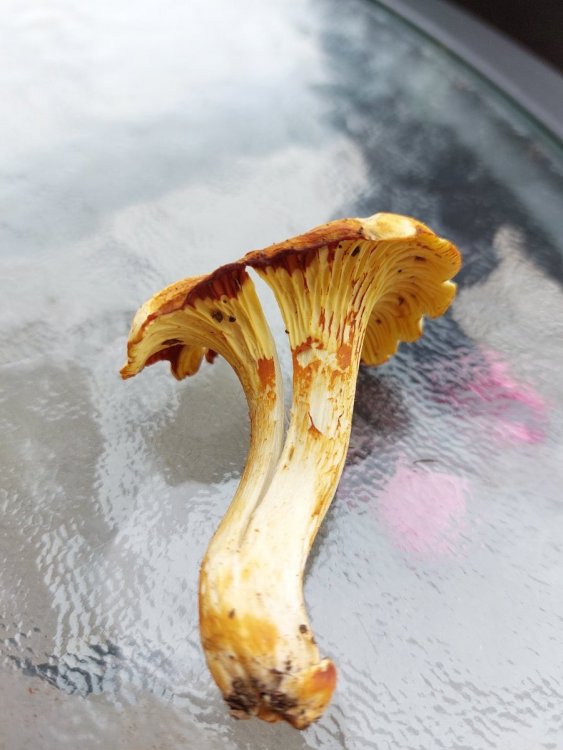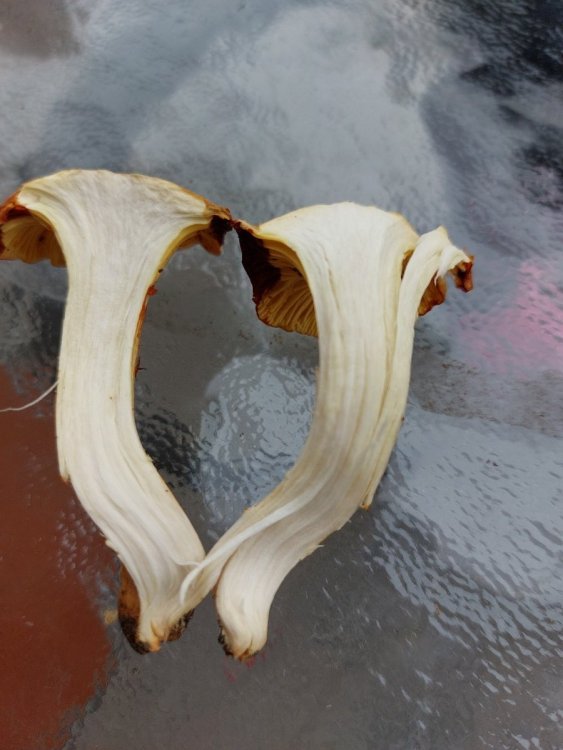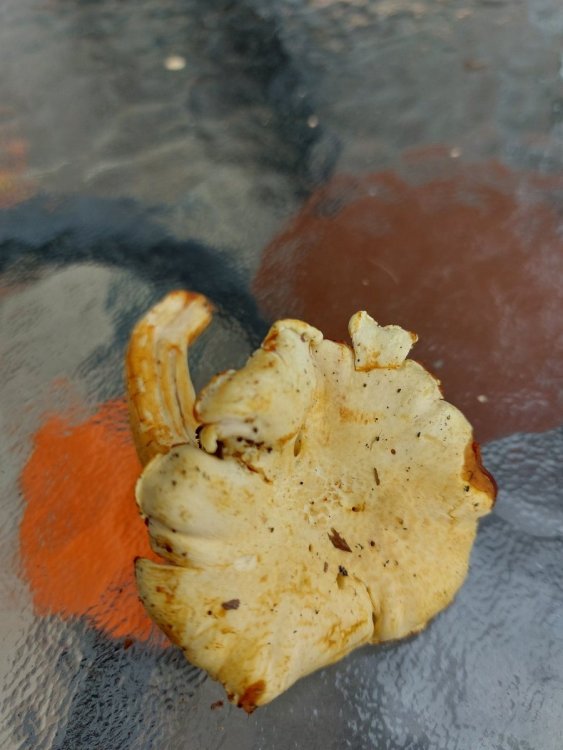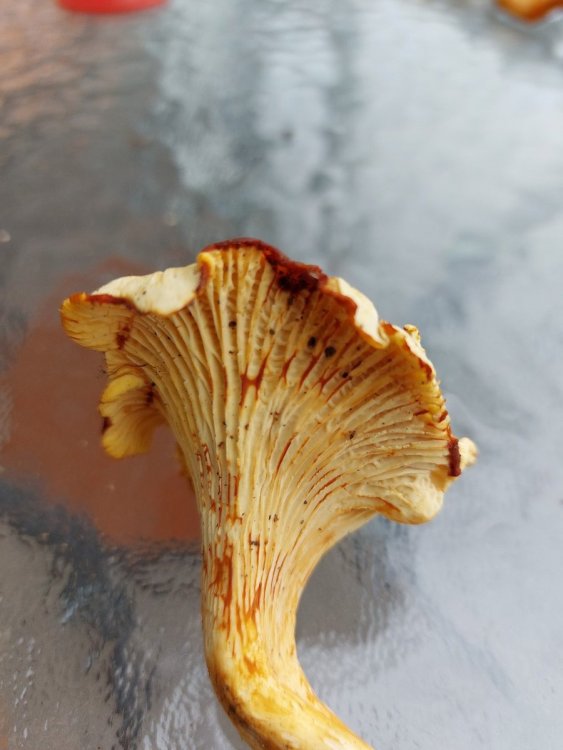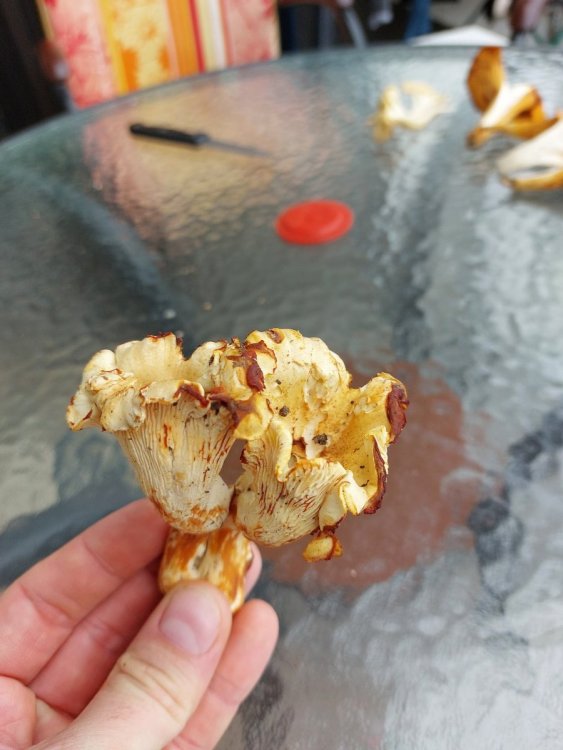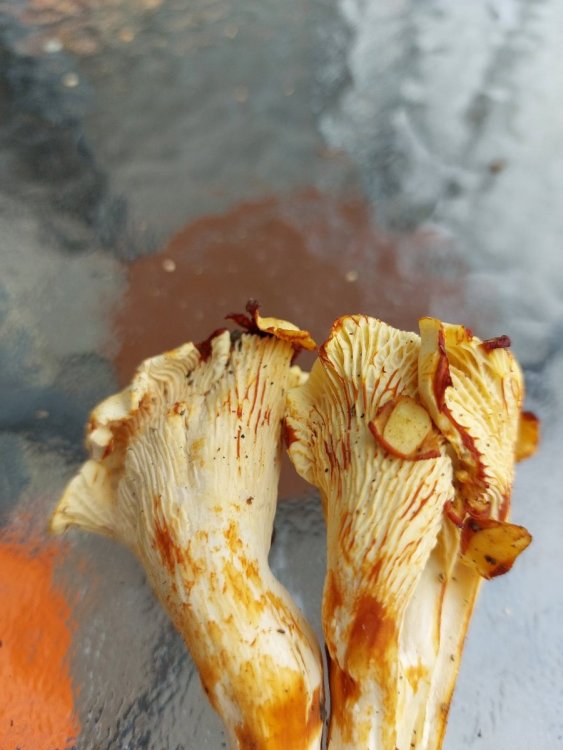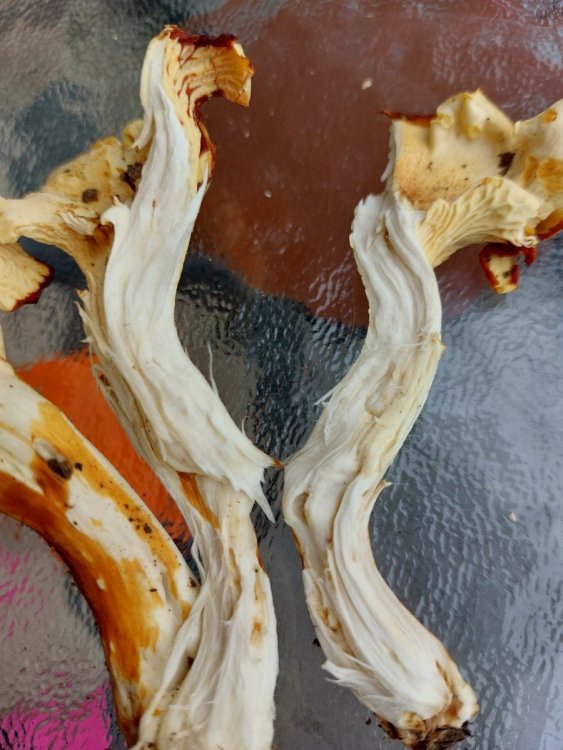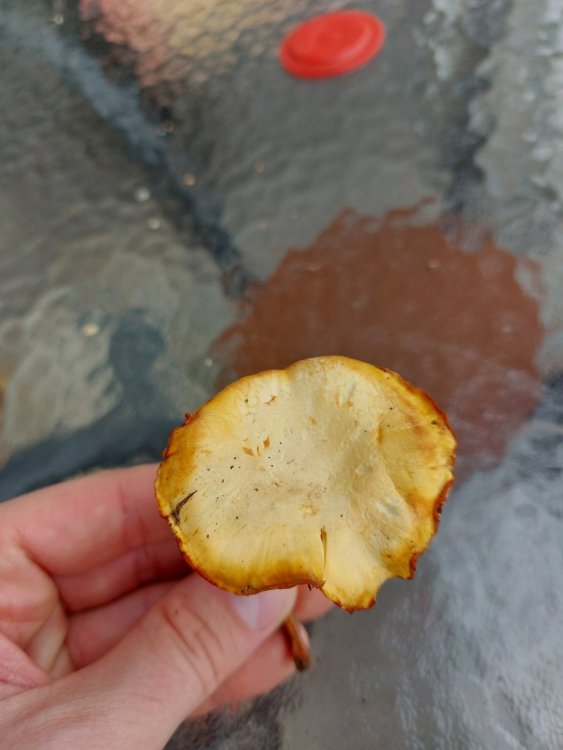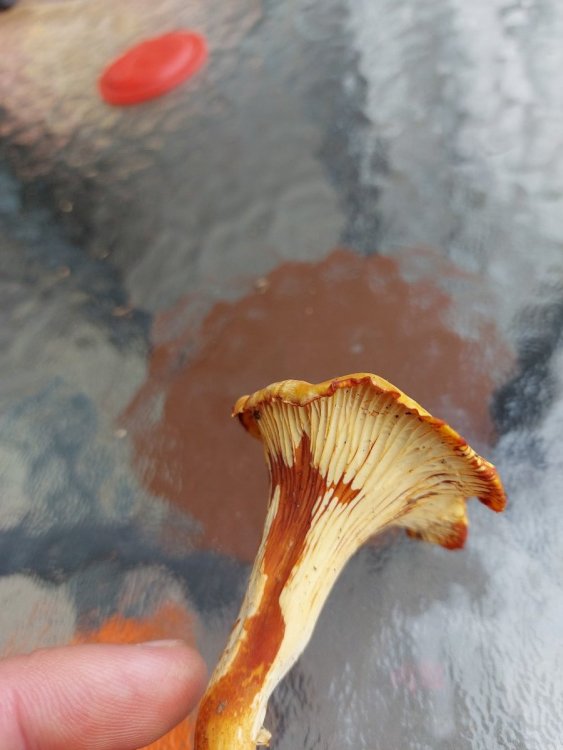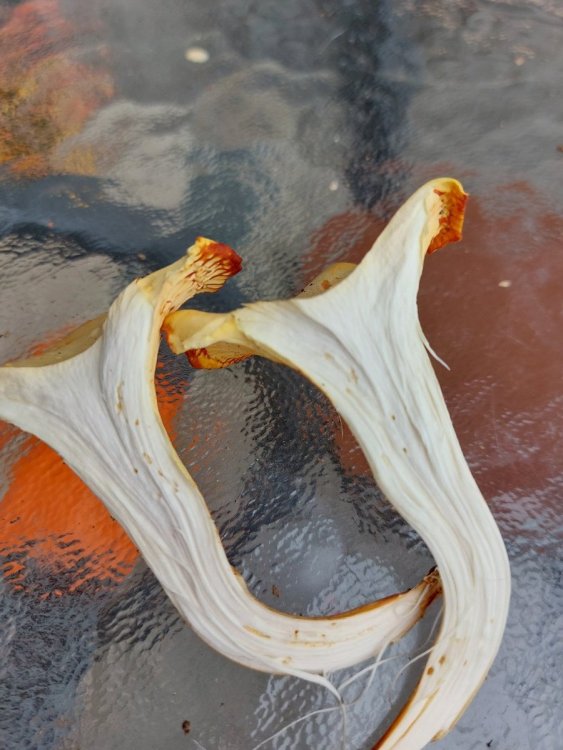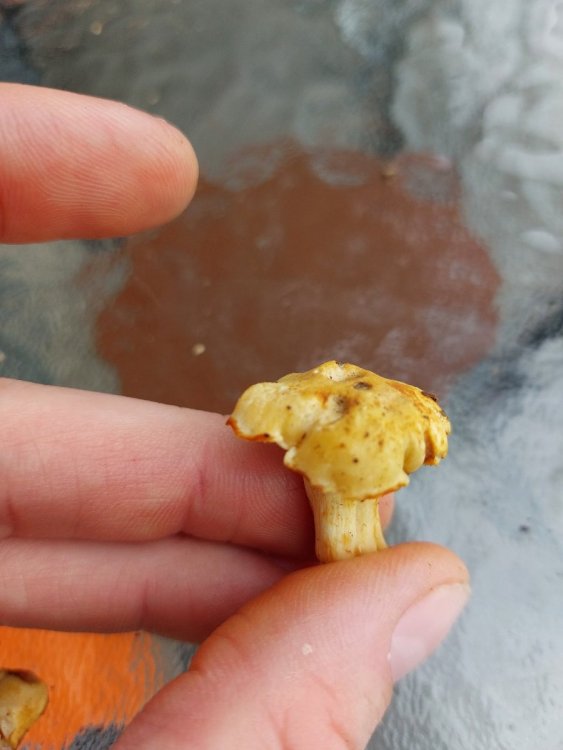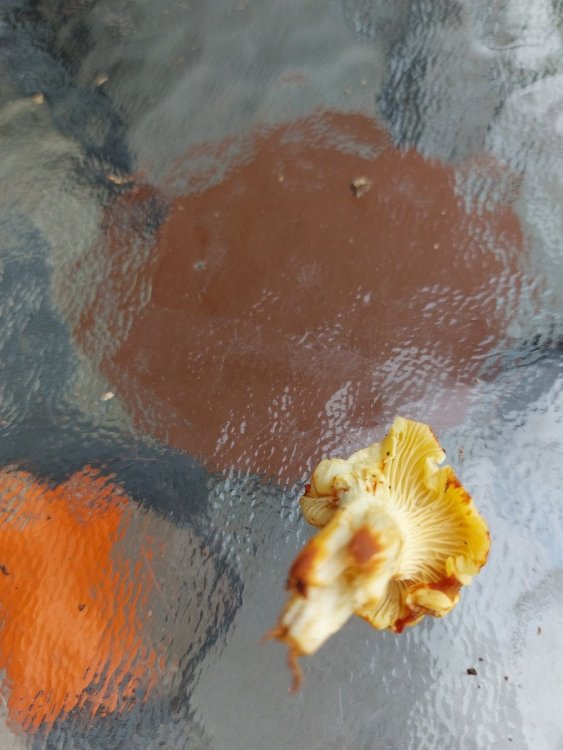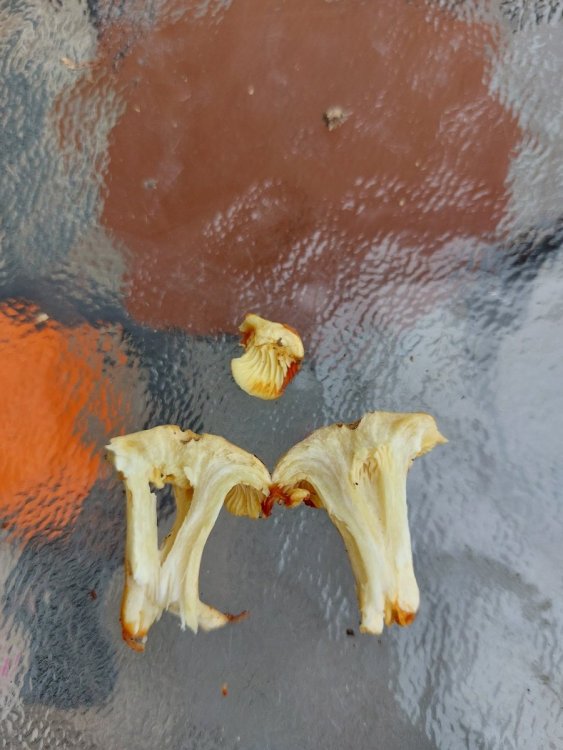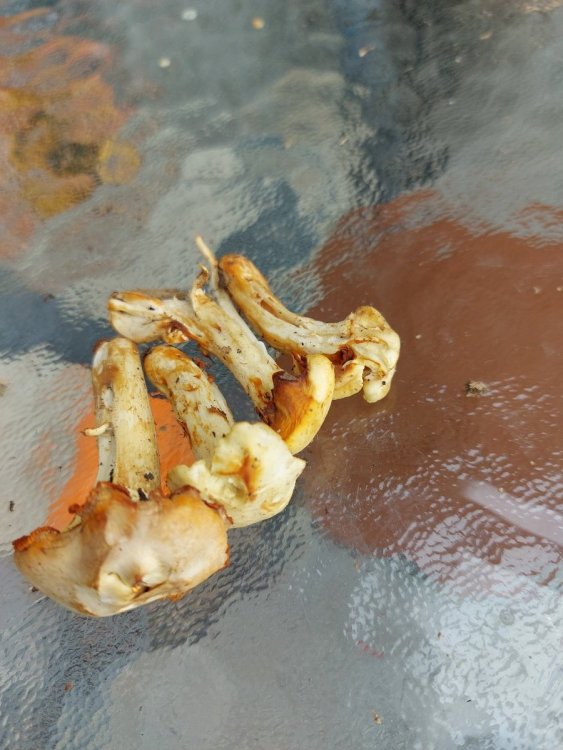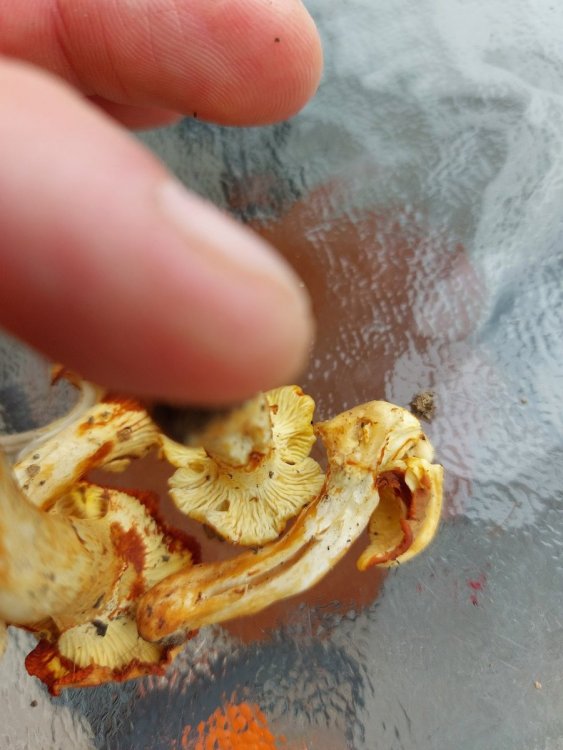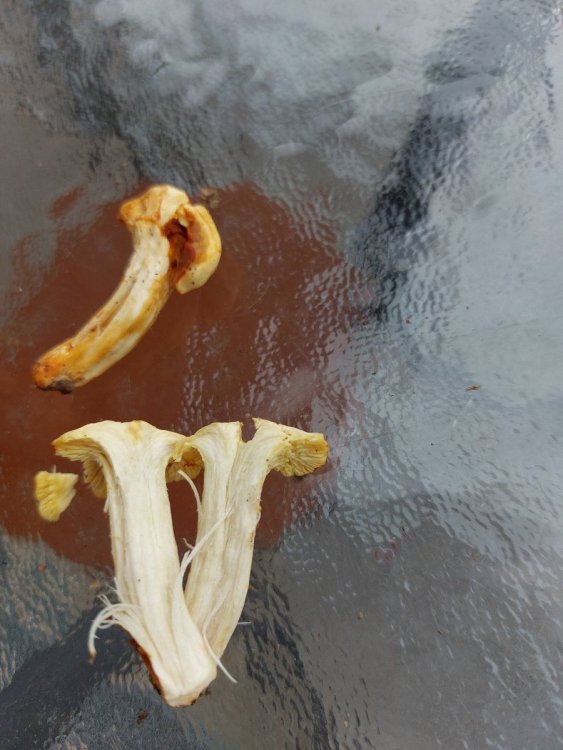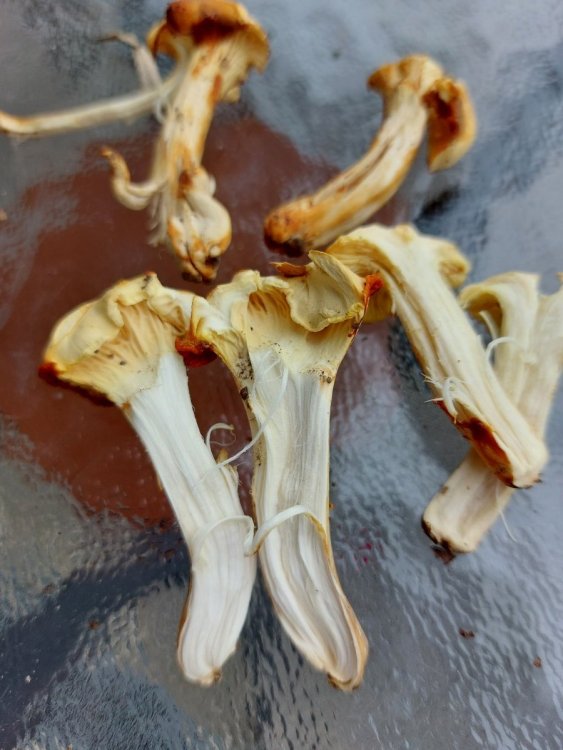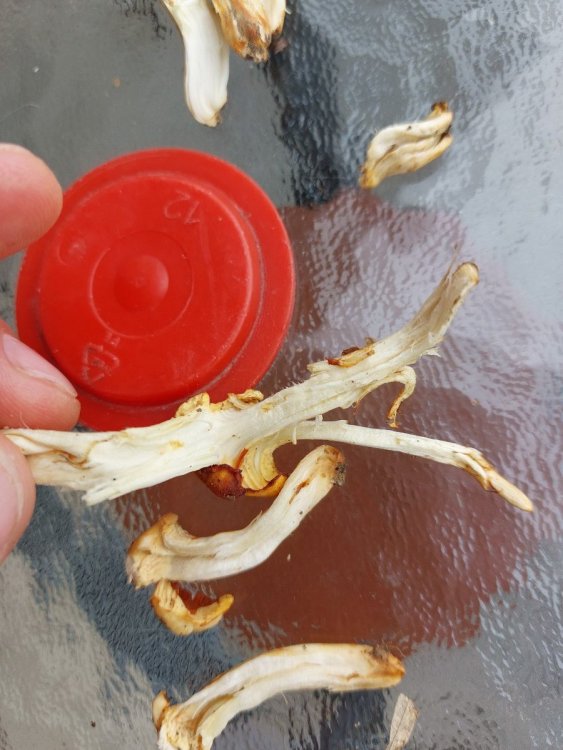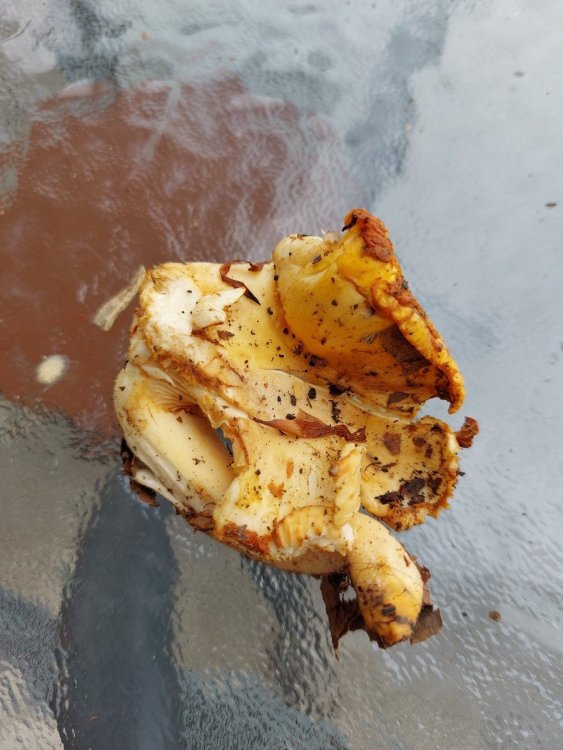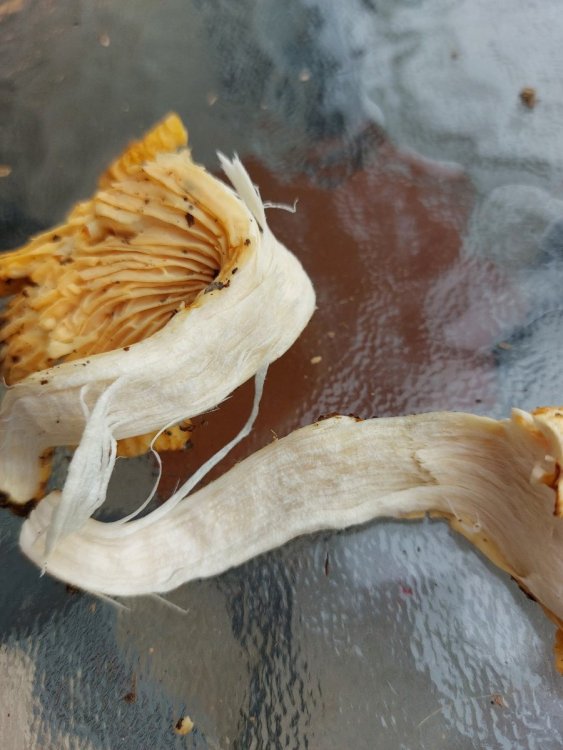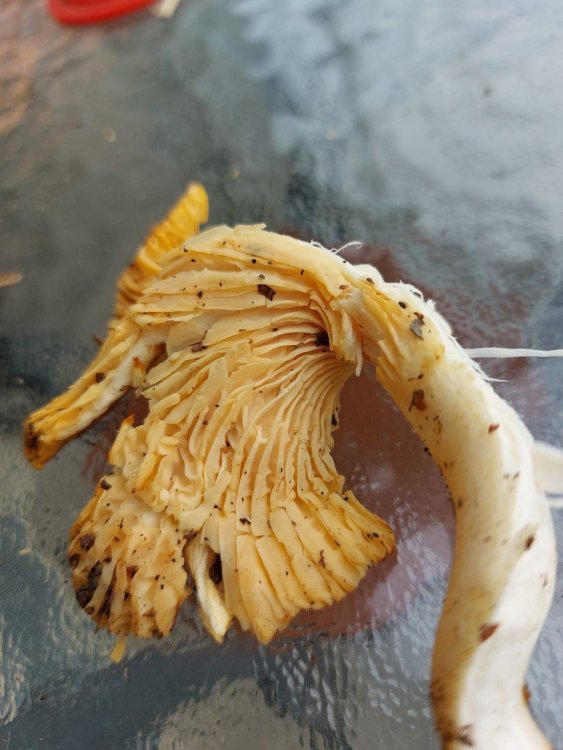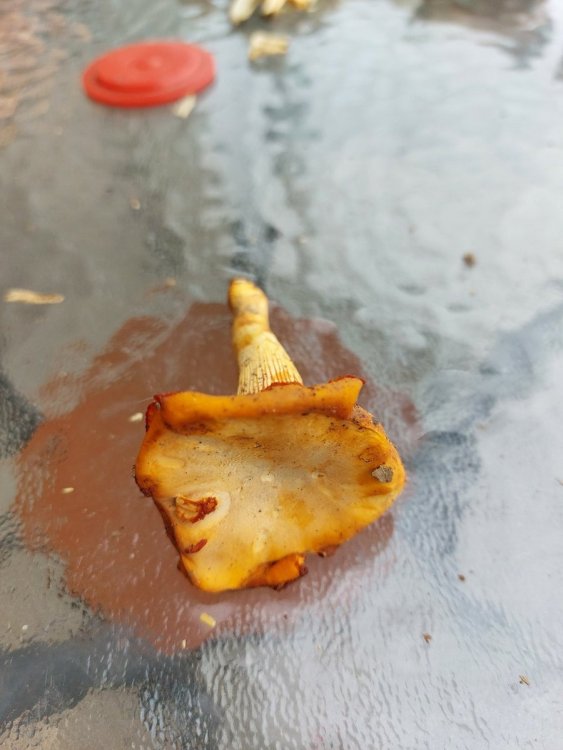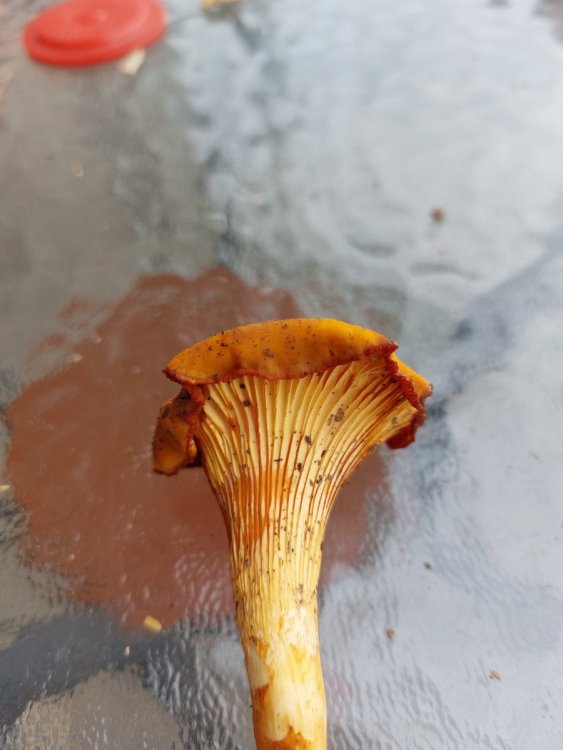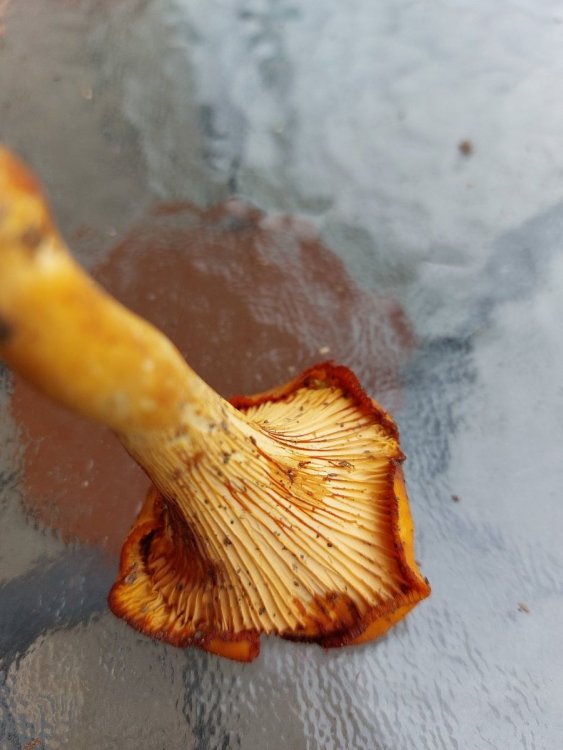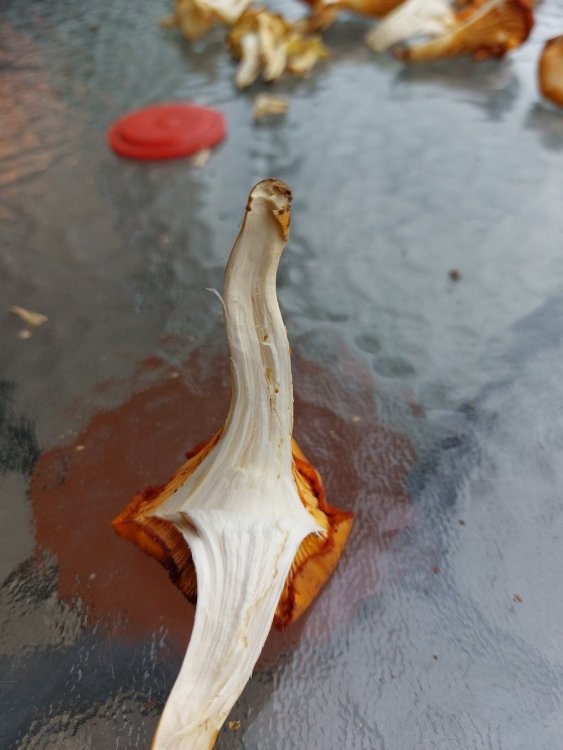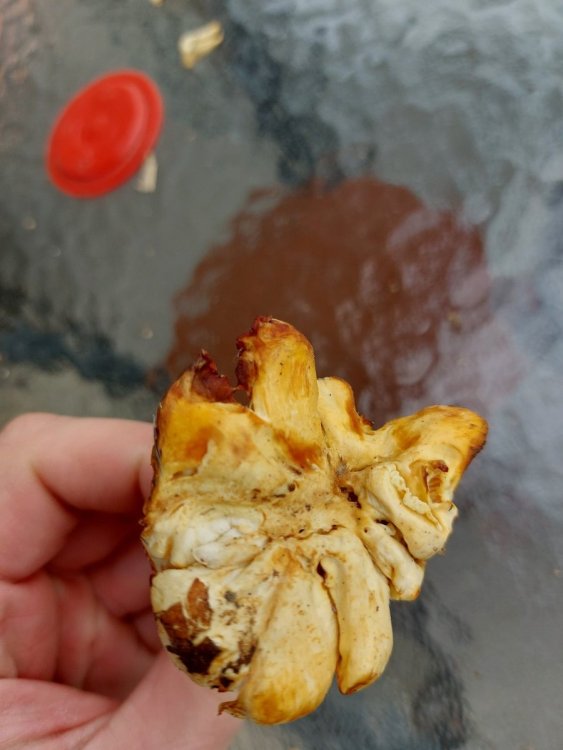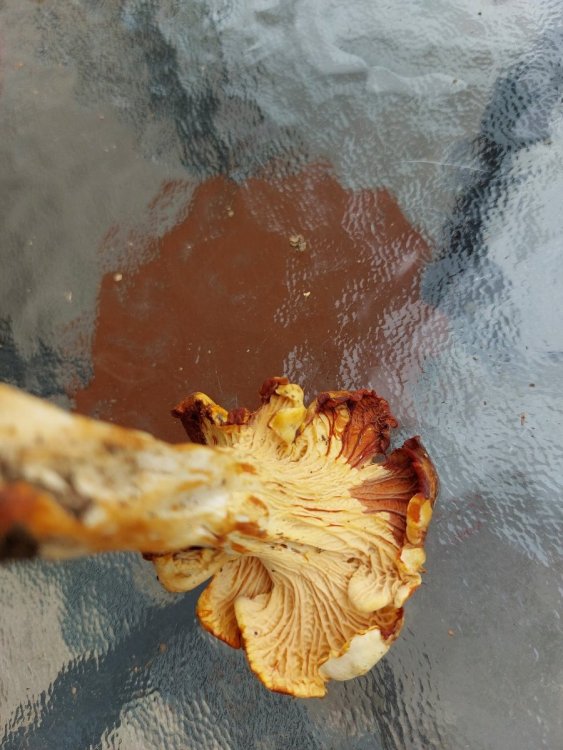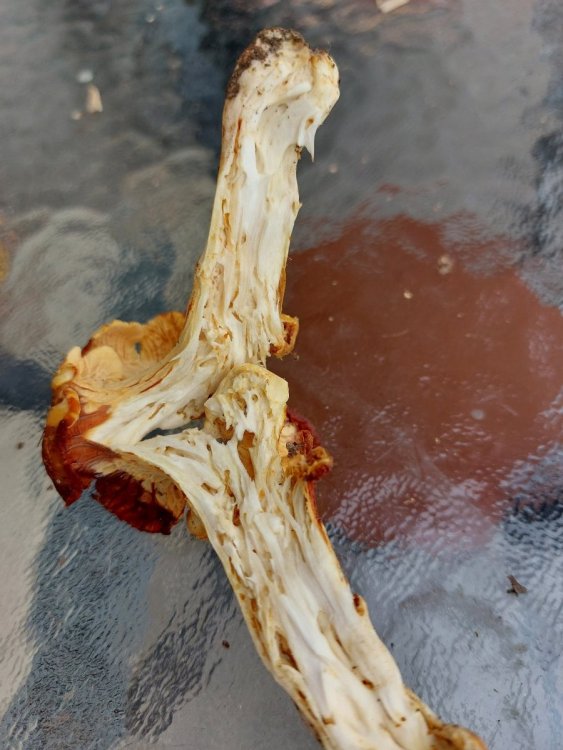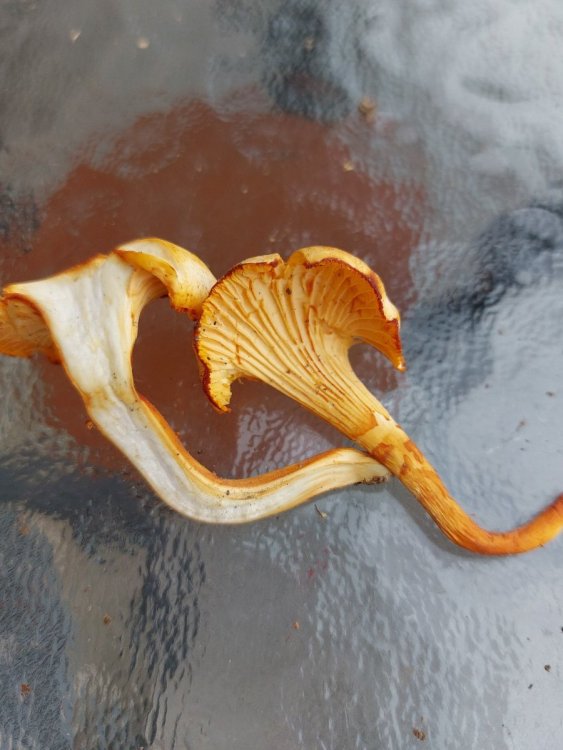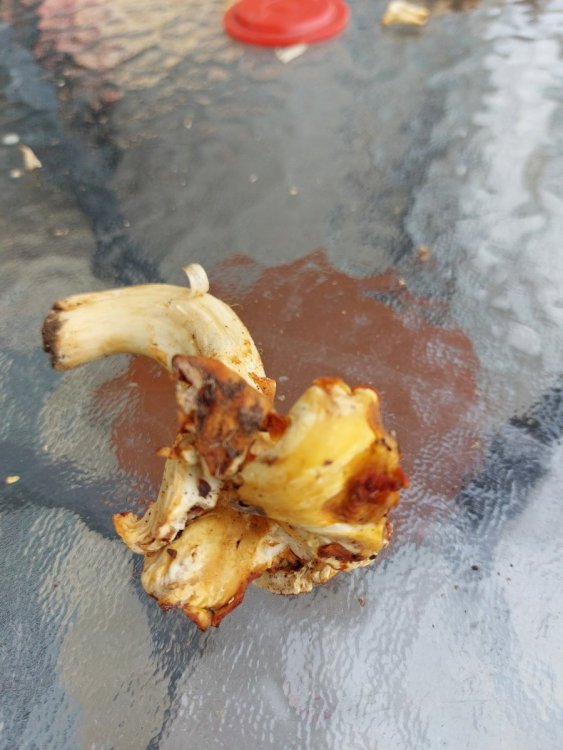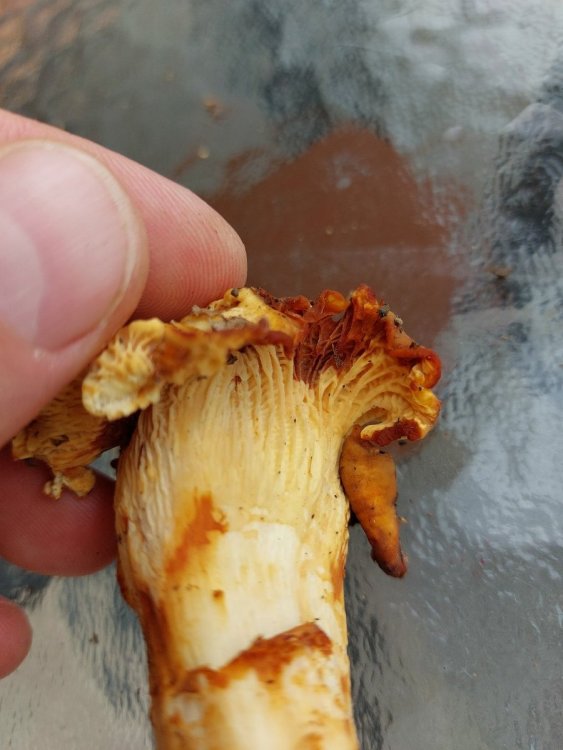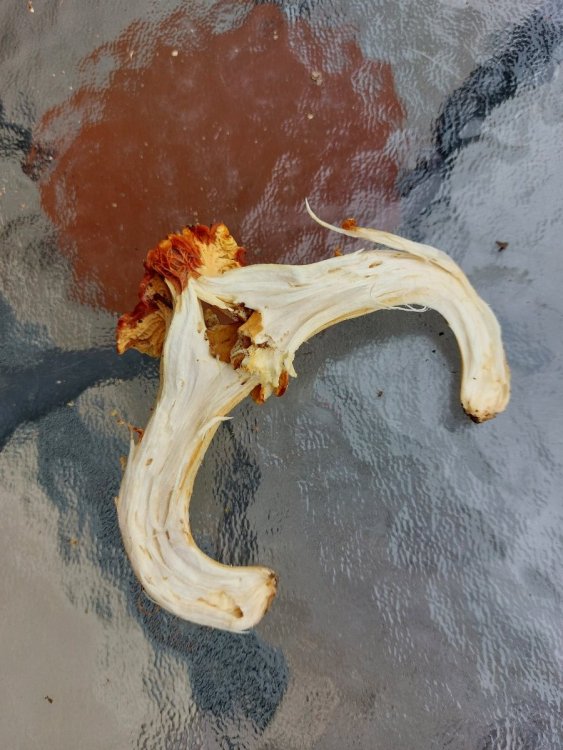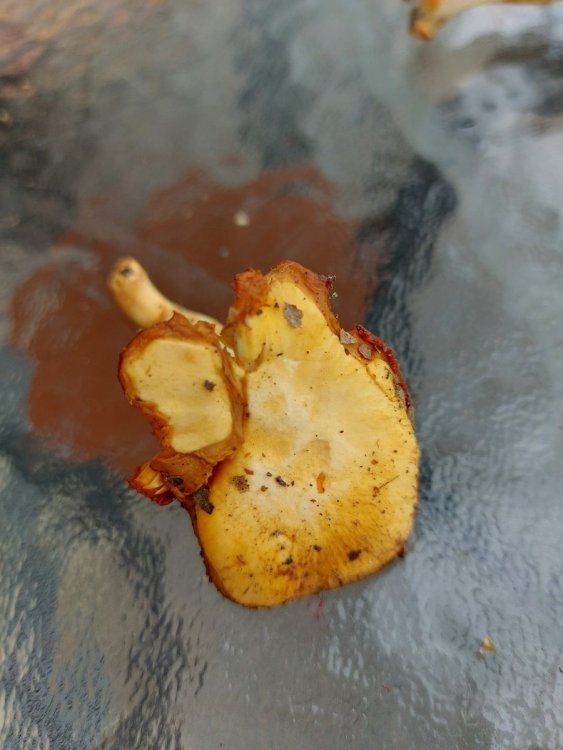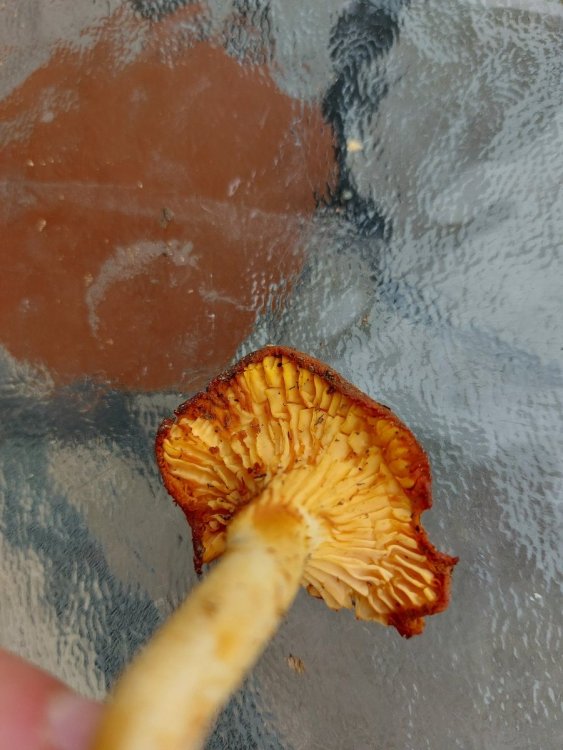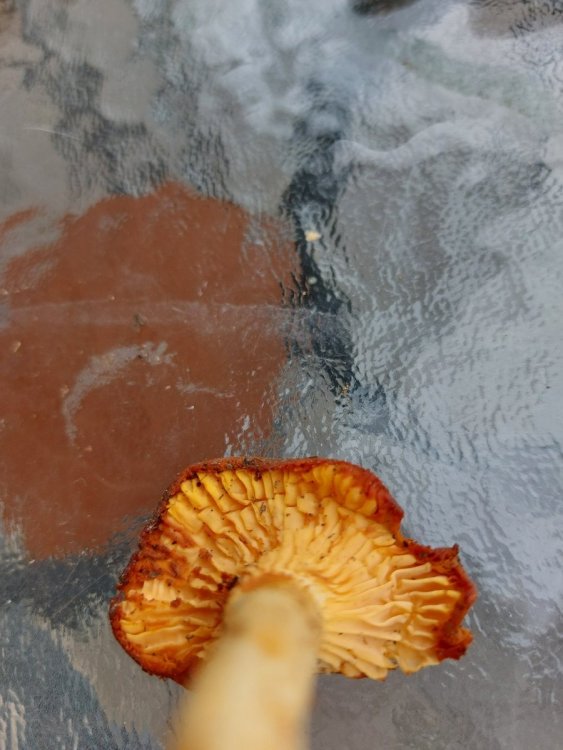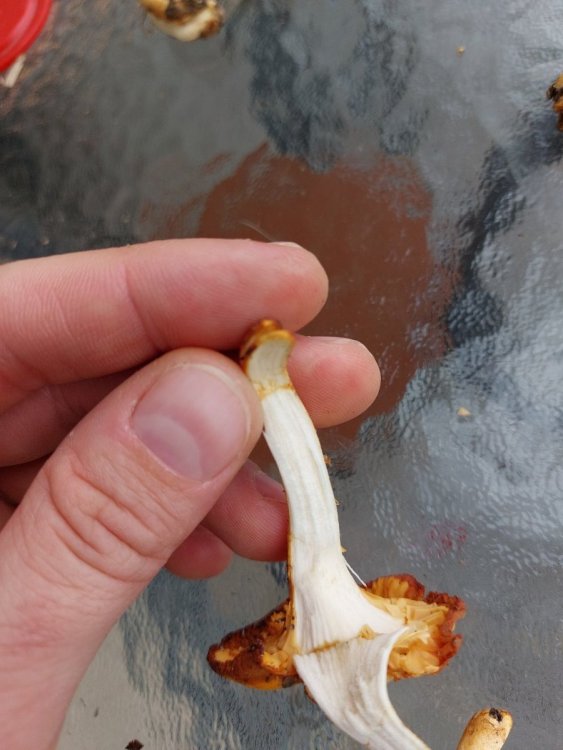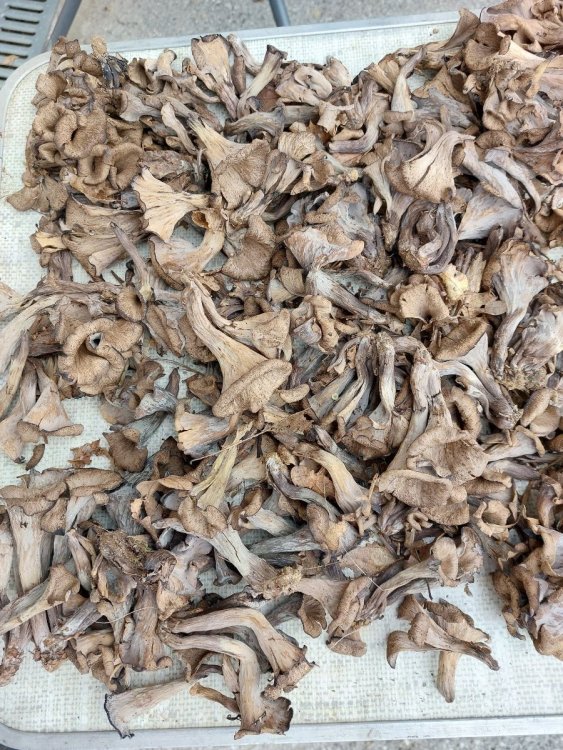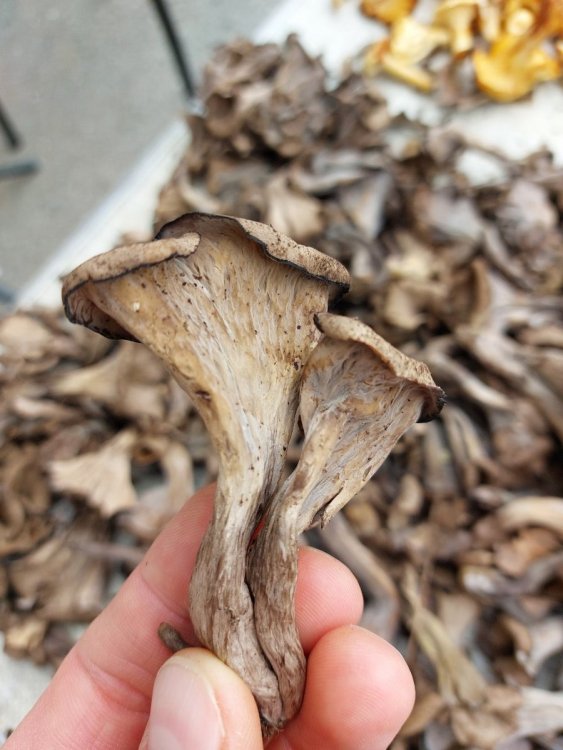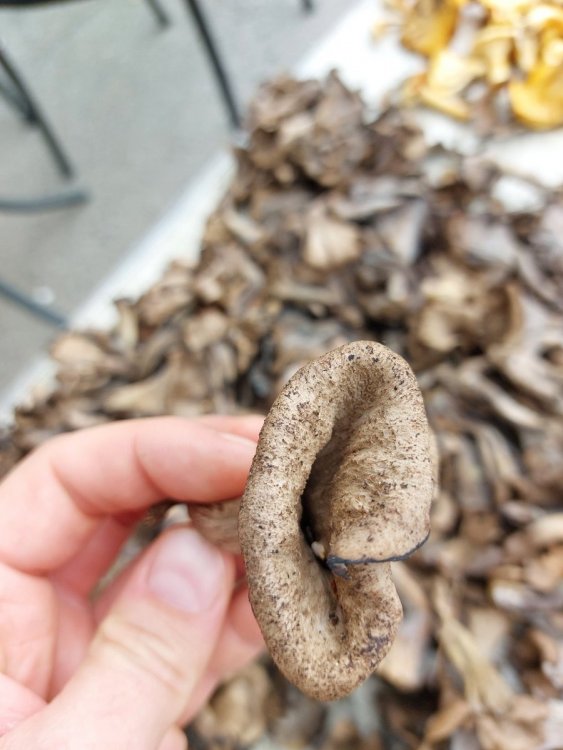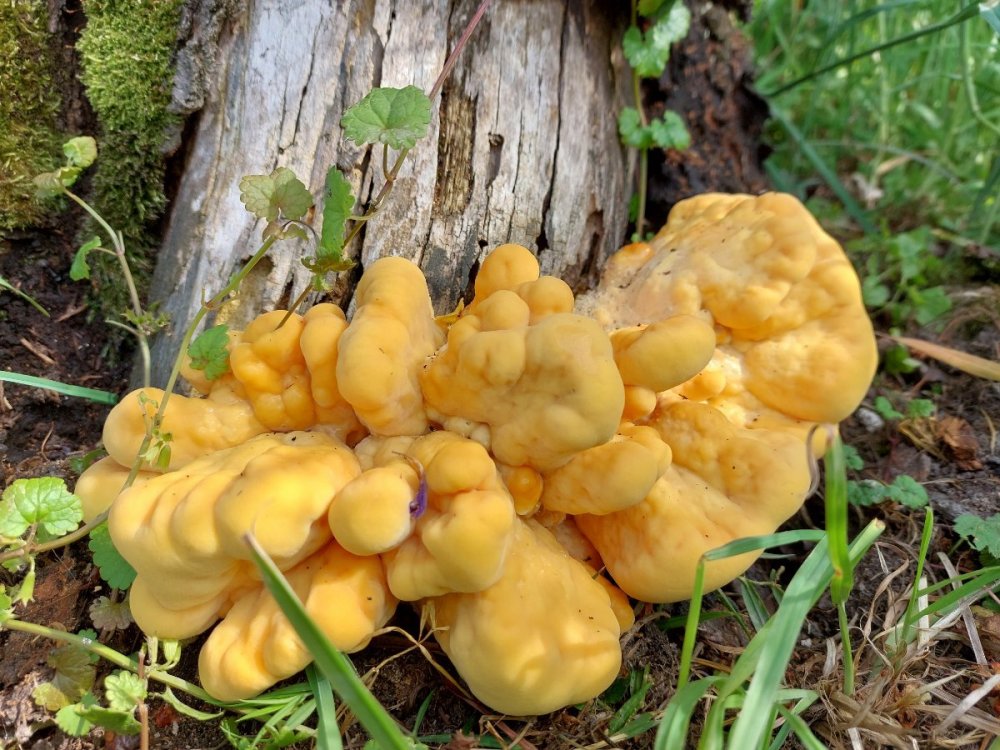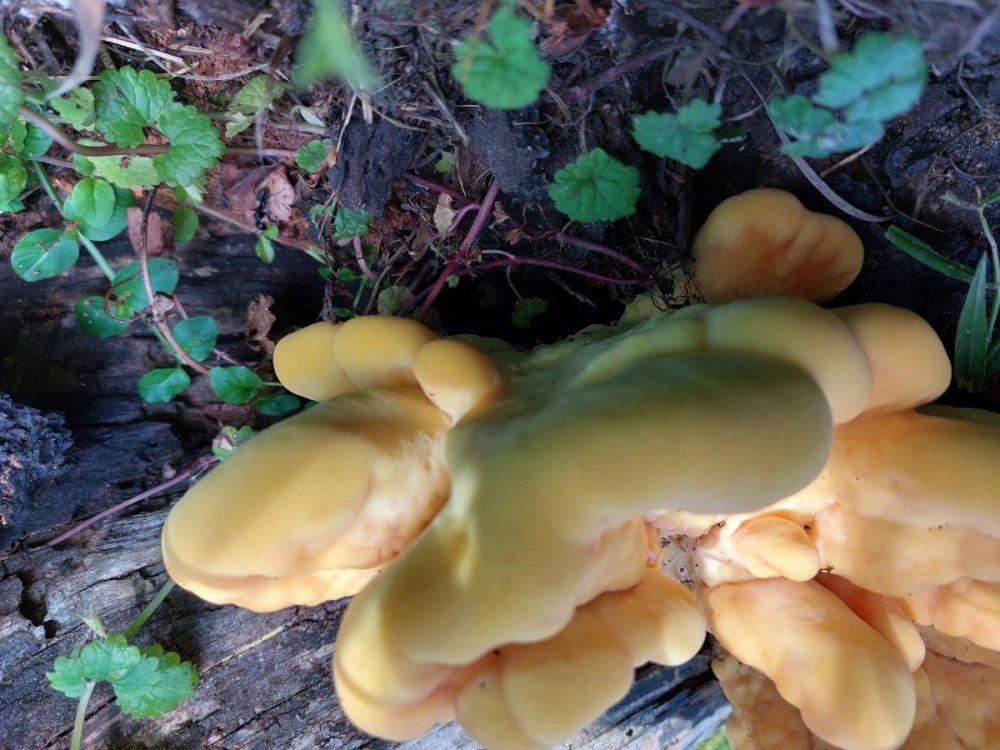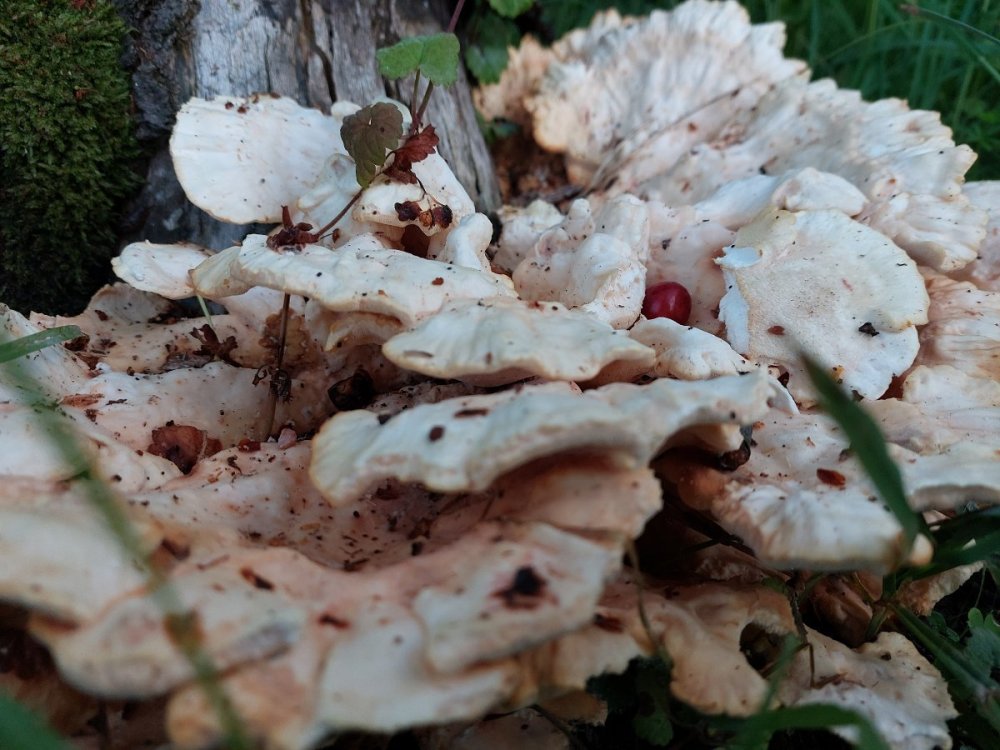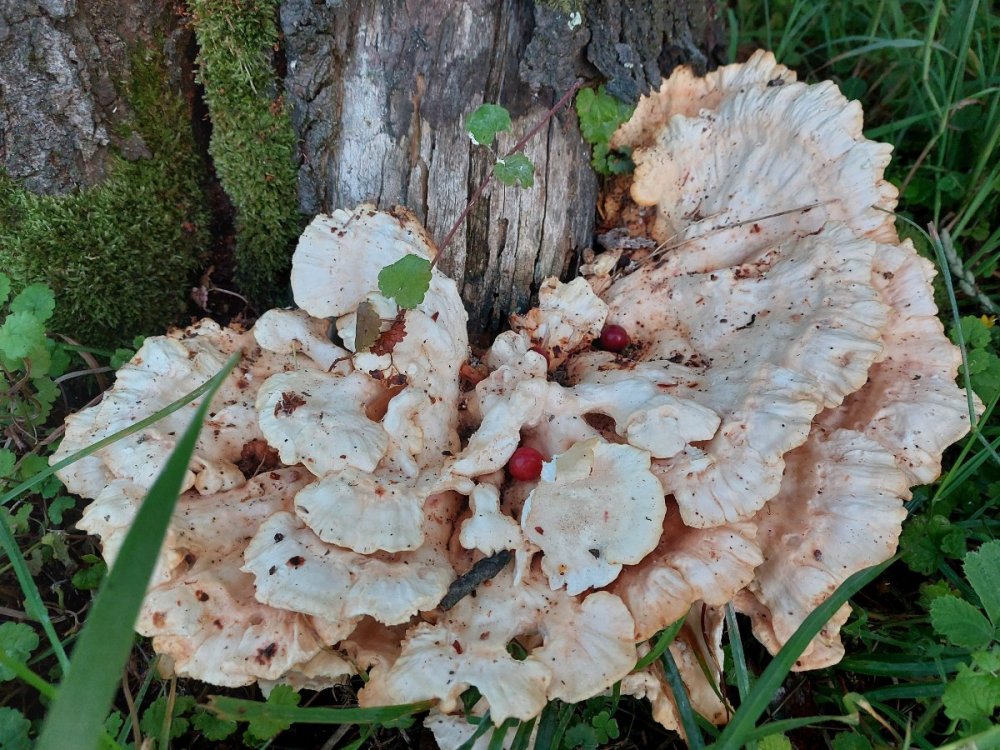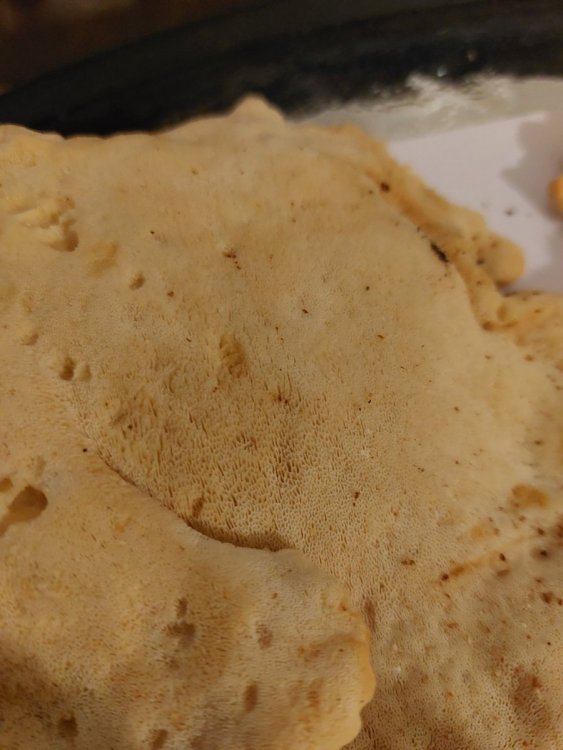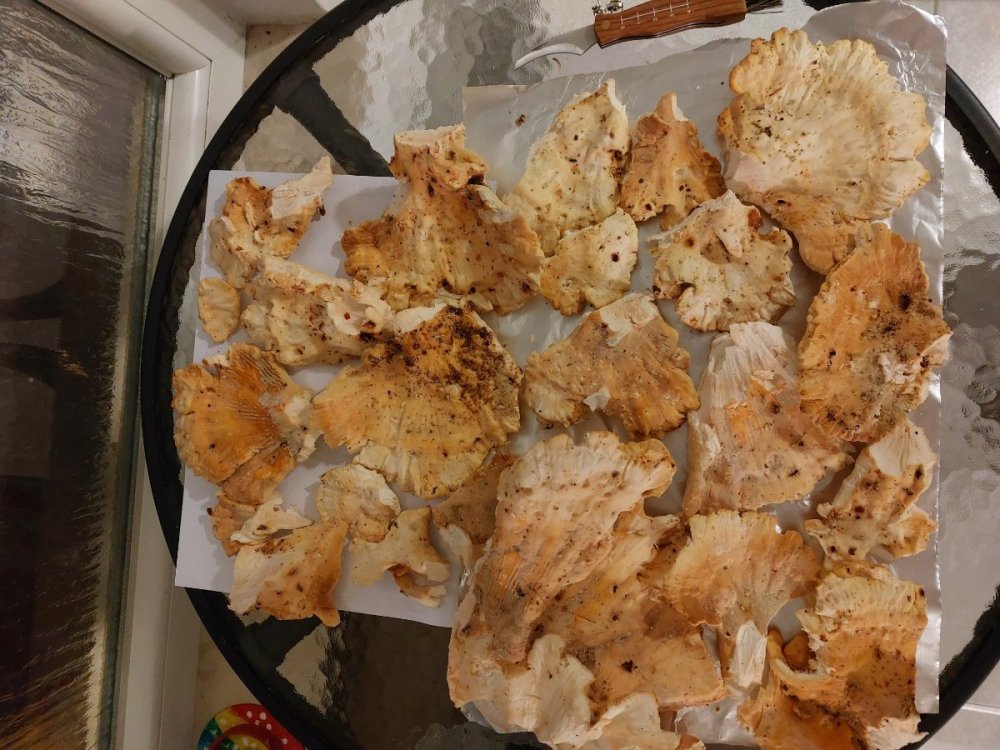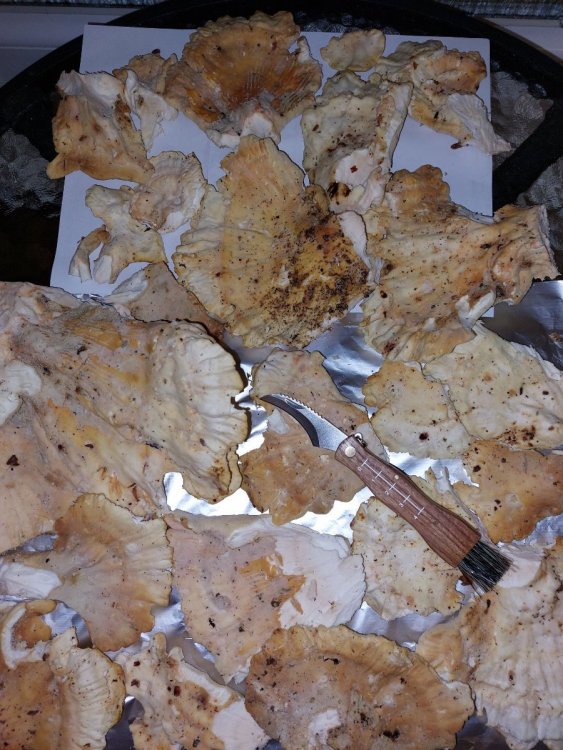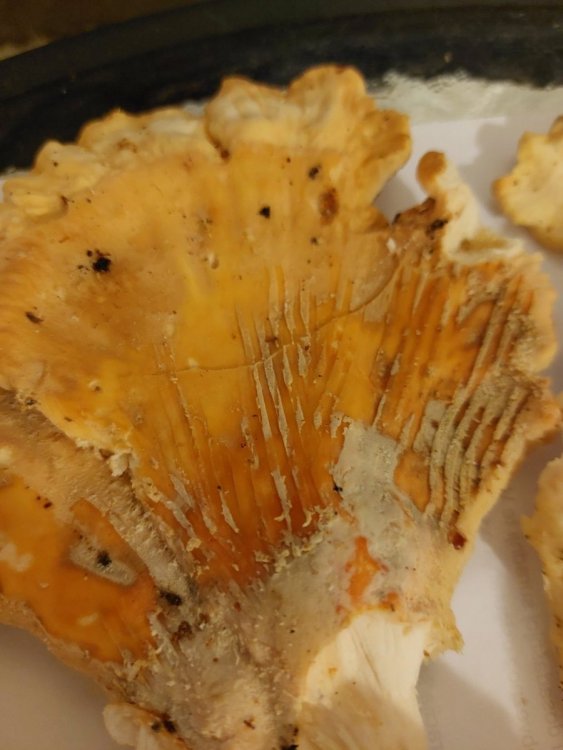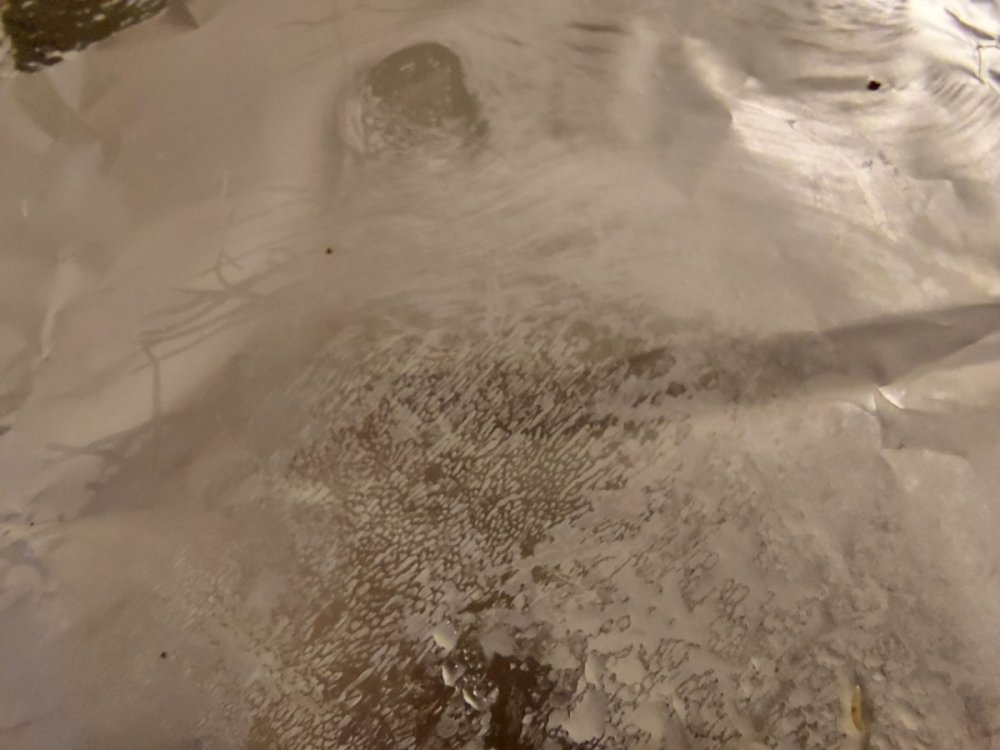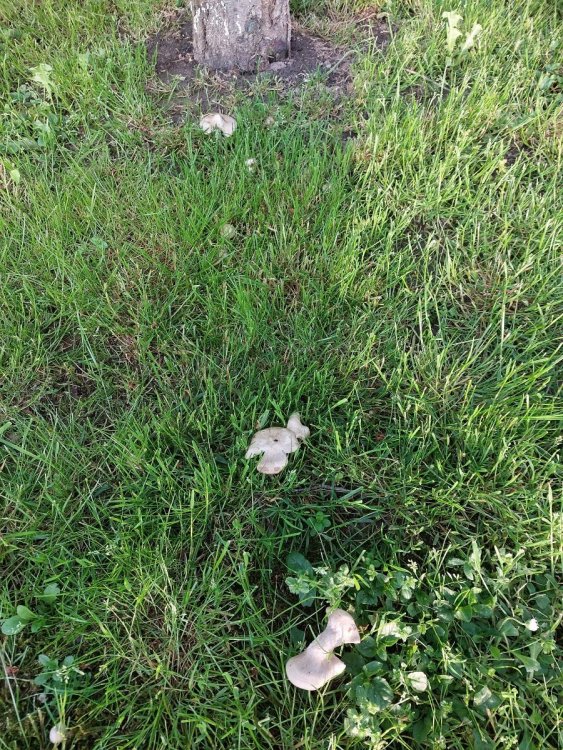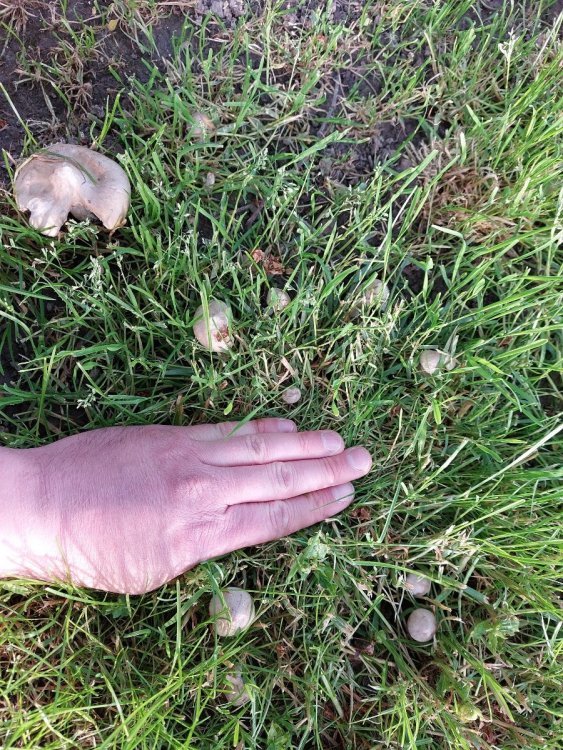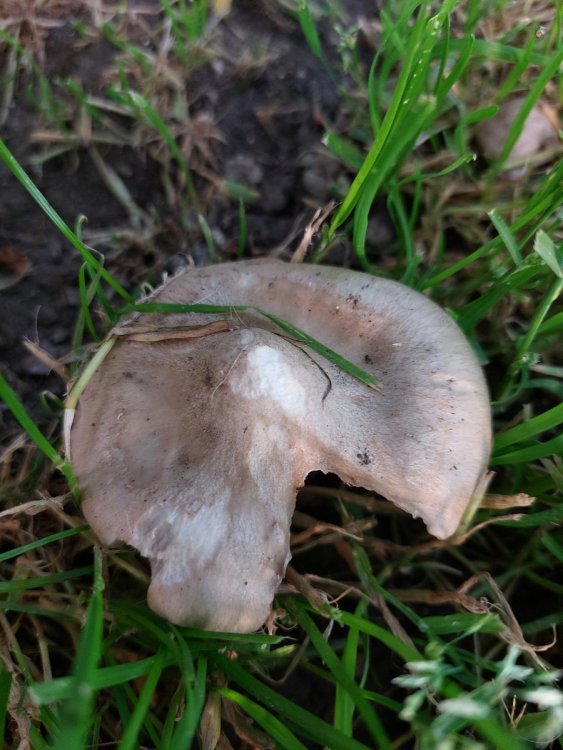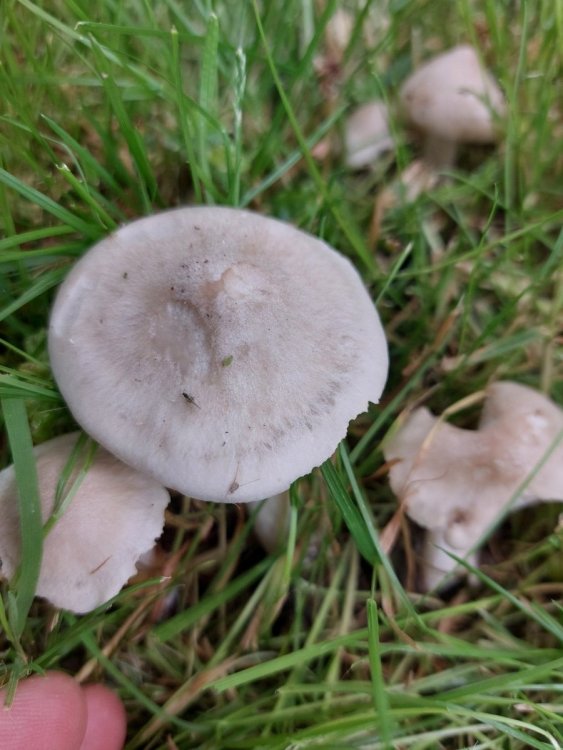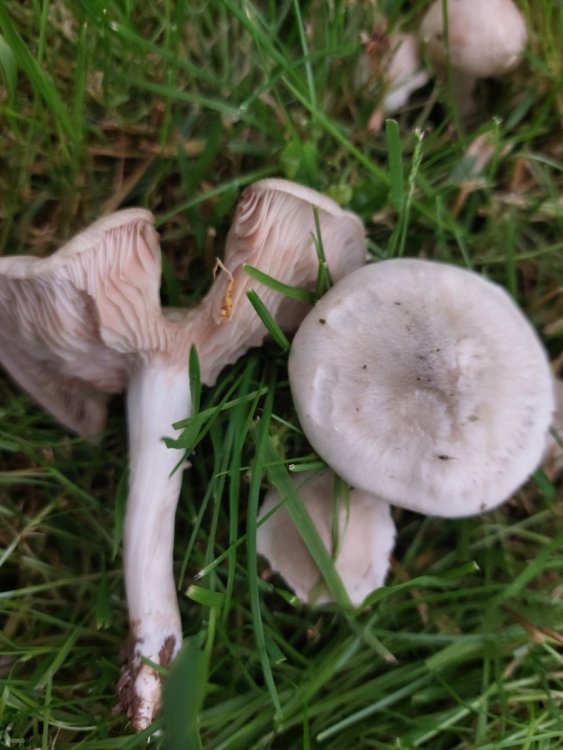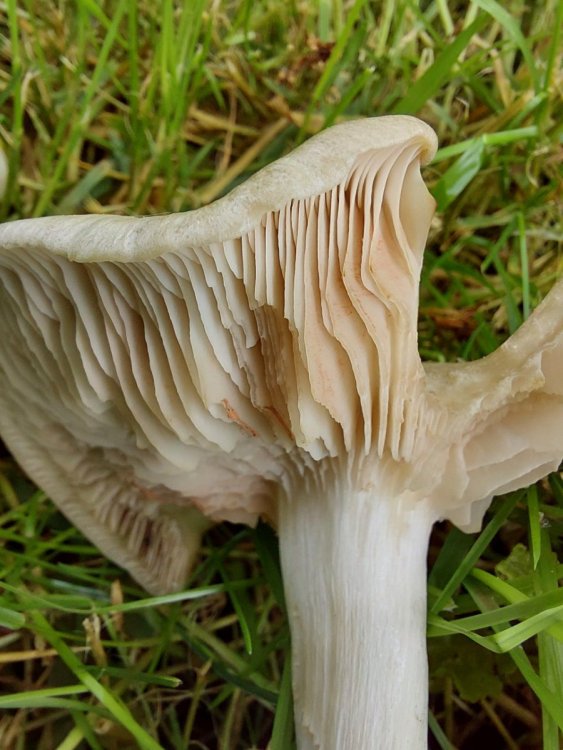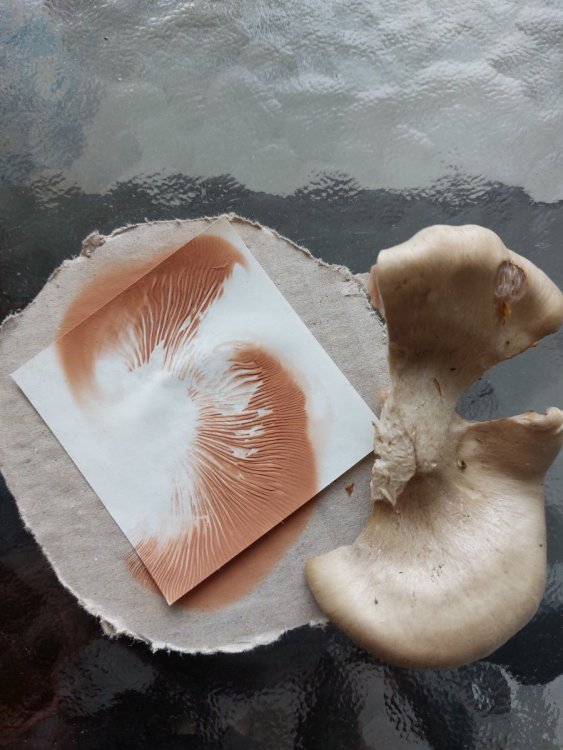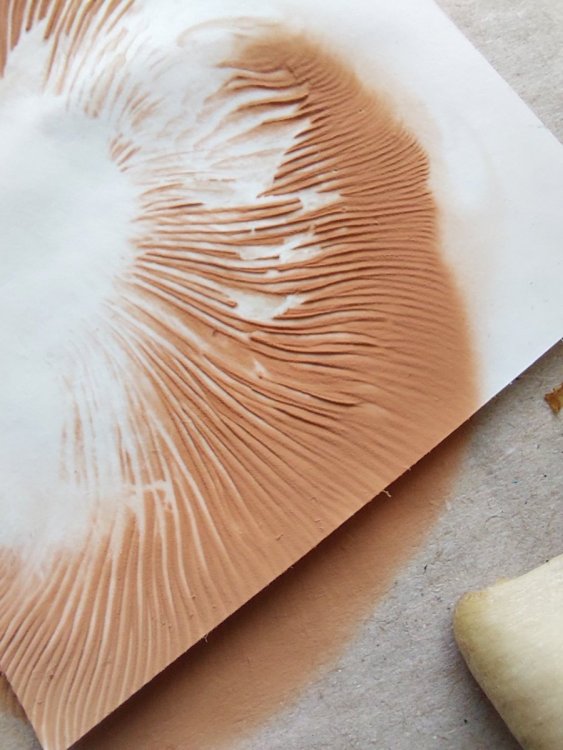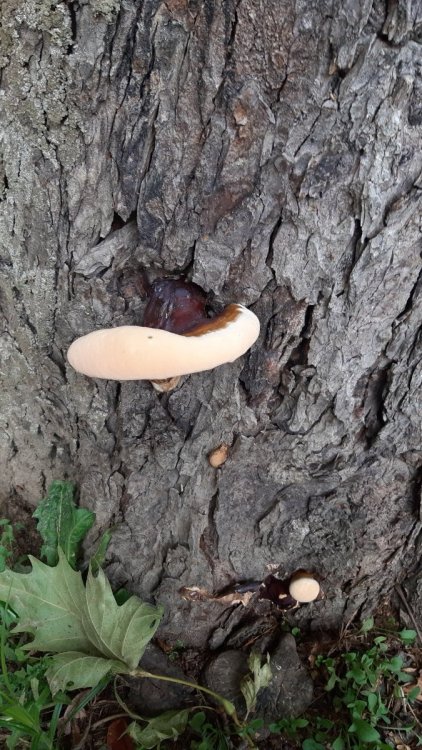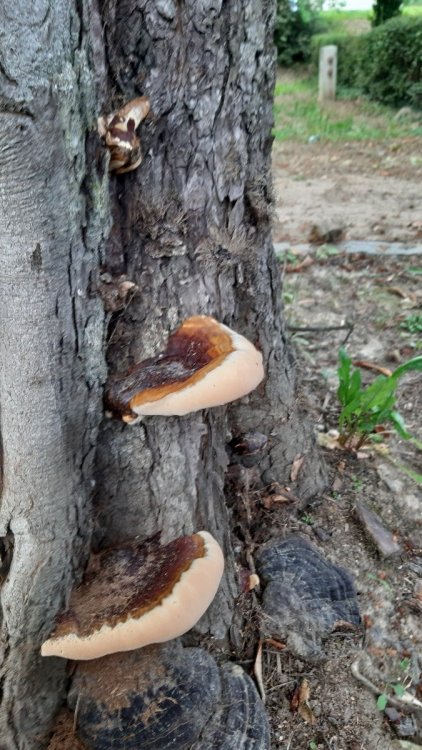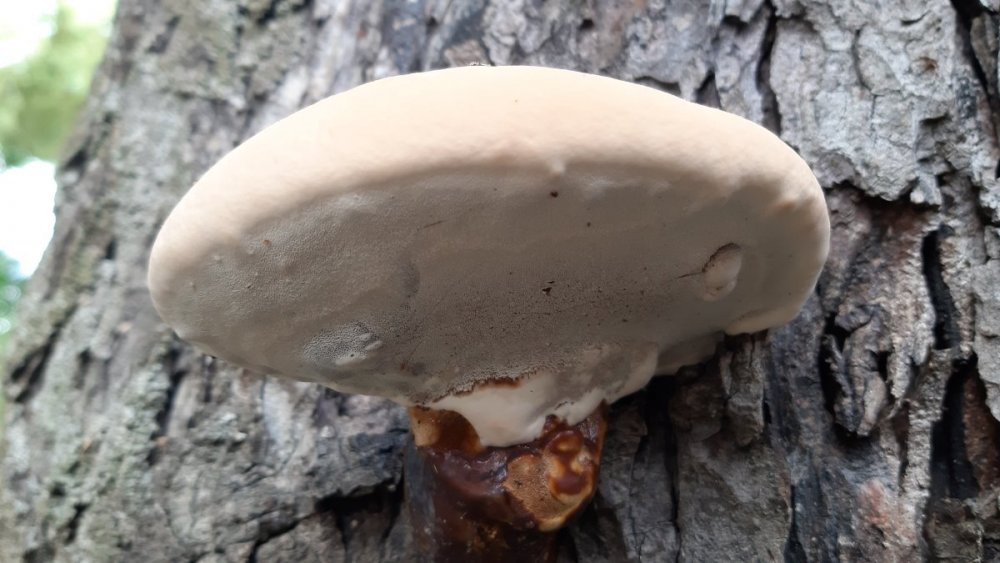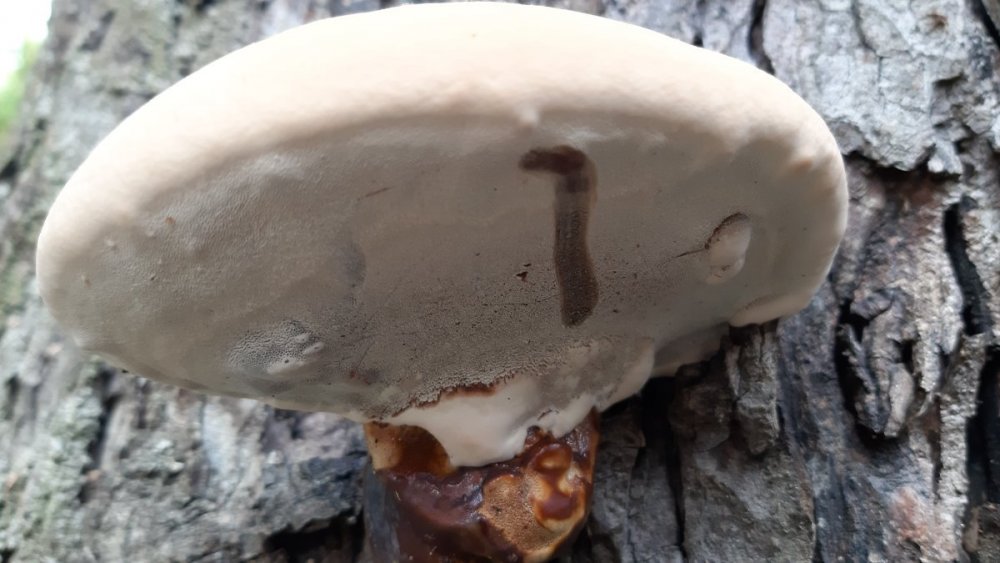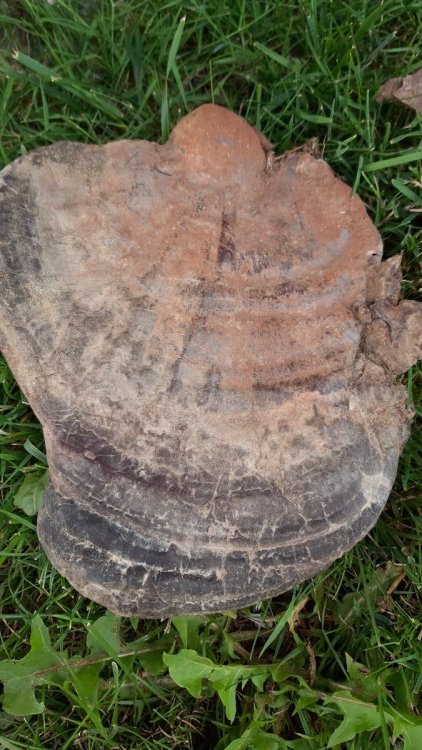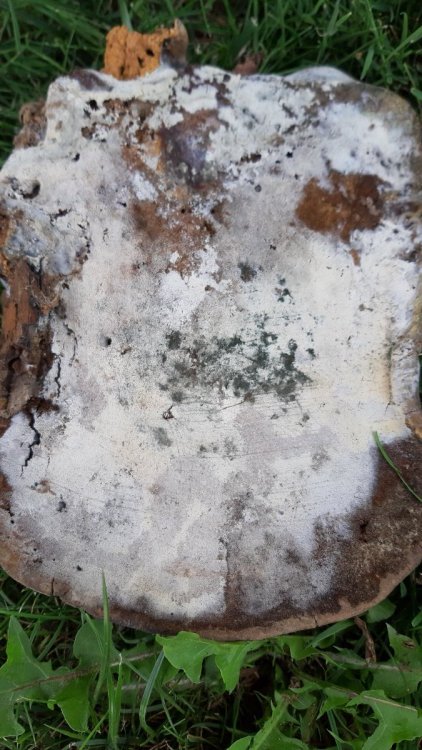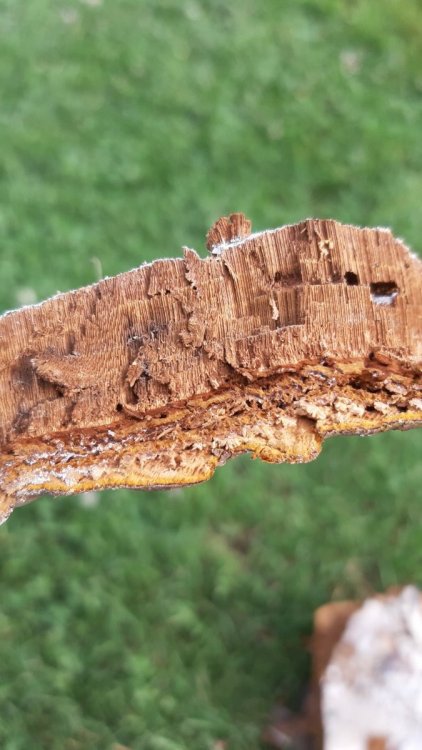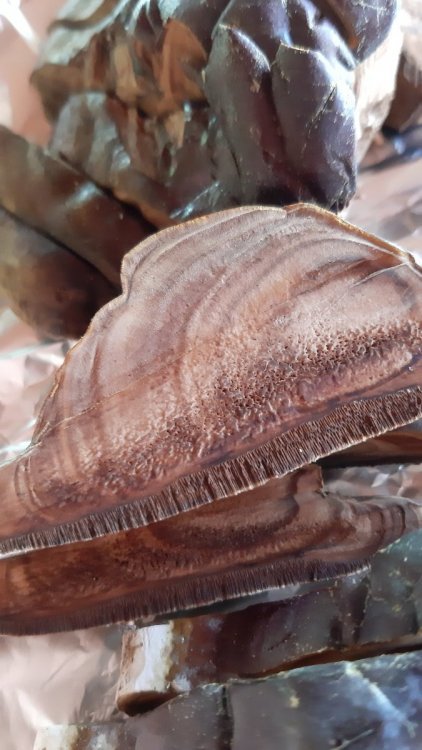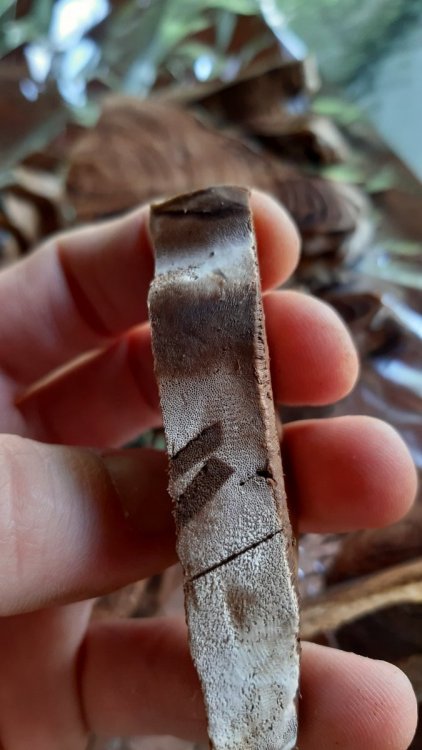

JimDiGriz
Members-
Posts
20 -
Joined
-
Last visited
Everything posted by JimDiGriz
-
Ok, thank you all very much!
-
Hello! Found these three under what I think is an ash tree, sandy soil, near a river. Cap connected at the edge, fully hollow, near black ridges, inside the holes light brown. Stem yellowish, inside has a little bumps. Smell pleasent, smells like chocolate to me. How to identify theese, are they morchella conica, maybe var. costata, morchella importuna (elata)..? I dont think it's Mitrophora semilibera (hybrida) since caps are connected to the stem, also probably not Pytchoverpa (Verpa) bohemica
-
Thanks everyone for your input. I decided to get rid of them just in case, and they were dried up anyways. A few that I took pictures of were left on a table and the spore print they left behind was white, so that would mean hygrophoropsis aurantiaca, at least some of them.
-
Thanks everyone for your input. I'm still wondering how to distinguish gills and folds or false gills.. According to mushroomexpert "you will have noticed that each gill is structurally separate; you can, for example, separate it from the cap fairly easily, and it doesn't seem as though it was part of the cap. Separating a false gill from the mushroom, however, is not as easily accomplished, since the interior of the false gill is actually composed of the mushroom's flesh." Does the situation in this picture qualify as false gills separating easily from the mushroom flesh?
-
Yesterday, for the first time, I've found what I thought were chanterelles. But upon further reading about false chanterelles I'm not so sure anymore. I thought I've understood the difference between gills and folds, but a bunch of pictures online of the false chanterelles got me confused- they also look like folds to me.. I Know they're not Omphalotus olearius, not as big and brightly colored, also not found on tree stumps and branches. But I'm not sure about Hygrophoropsis aurantiaca. Can somebody please take a look and point me in the right direction? As I returned home late yesterday, I've left them outside overnight, and they, I assume, dried up and got all reddish on the edges, gills and allover. Here are the couple of them, pictured above, bellow and opened up: 1. One of the biggest, opened up last night, seemed white inside, now I can see a bit of orange color inside.. Maybe changed color from being opened up? 2. Are those gills or folds? 3. 4. 5. Certain those are folds, also seen small ridges in between folds.. 6. 7. 8. some of the smaller ones now. This one seems not so white inside, hard to tell on a picture. 9. 10. The most suspicious one, has a very thin ridges, but on closer look some of them look fatter and also have small ridges in between them. 11. ridges seem very thin. white inside but has a small holes that are orange. they seem like a worm holes, but according to some books, chanterelles don't get infested with worms? 12. rigdes, but alsmost white on the edges, I think happened over night. 13. slight orange color in the middle inside. 14. Here are also some black trumpets (raterellus cornucopioides). Usually I see them much darker on top, these ones are a bit brownish. Just checking those out too. Thanks in advance! EDIT: I should say, I don't get the apricot smell, no distinctive smell at all I think. Maybe also because they were outside last night and got dried up..?
-
ok got it, I hope the tree will still stand there the next year. Maybe it'll grow again this autumn.. Thanks!
-
Hello everyone! I'm looking for a final confirmation that what I'm looking at is indeed chicken of the woods (laetiporus sulphureus). This was the firs time I actually found one. I barely noticed a bunch of bright yellow blobs growing on the base of the cherry tree. My first thought was chicken of the woods, knowing it basically has no lookalikes that are this yellow. But on further inspection I was a bit confused because I expected fan like shelves, not blobs. My confusion grew once I poked the "blobs" with my finger and noticed it's not spongy and leather like, but really like wet bread and full of transparent liquid. Later I read in the book this is exactly how young specimens are. And cherry tree is noted as a common host along side oak, beech and willow. I took these pictures in this stage on 22.05: Now I returned at the place on 06.06. and to my surprise, the few blobs really took off big time! bunch of shelves on top of each other, everything really fanned wide. Not really that yellow anymore but still enough for me to be reasonably sure it's chicken of the woods. The feel to it now is really what I expected in the first place, spongy and brittle. I'm not really sure if it's a good edible at this stage, but I don't think I would have trouble chewing it after cooking. Unfortunately, it was really low to the ground so it got tangled in with the grass and dirt. Also, bunch of beetles are boring the cherry wood around it so it's also full of the wood chips on top.. Spore print is white: I'm basically just looking for a confirmation and maybe a thought or two about edibility at this stage. Also, I keep reading about some people not having a good stomach reaction to chicken of the woods, but I can't seem to find a proper explanation is it really inability to process it or is the problem because people sometimes confuse it with another lookalike that grows on eucalyptus. Cheers!
-
Thank you very much for the identification! The more I read about Entolomas, the more it fits all the criteria! Thanks again!
-
Hello! Found this mushrooms in my lawn, under the plum tree, more or less growing in a straight line. I though it could be Calocybe gambosa, the texture on top looked like it could be, the fact it grew in a "fairy ring" (more like fairy line), time of growth.. But cap shape is not round but looks depressed with a nipple in the middle. One big thing steering me away from st. georges mushroom is a light brown spore print. Any ideas?
-
The tree is definitely chestnut, Aesculus hippocastanum I think. Maybe the leave on the ground puts you off, it's from the nearby platanus tree that has similar looking leaves as maple. Do you think G.applanatum doesn't grow in Europe? I found THIS paper where it's mentioned as common (in northern Eurpoe at least).
-
Yeah, I agree it's probably Ganoderma of some kind. I tried keys on mushroomexpert, but it's incoplete for polypores. It came out to be a G. applanatum. It does fit the most imo, but odor/ taste description really bugs me the most.. Anyways, I really do think it's not Hapalopilus and that it's not toxic so I think I'll continue the making of tincture..
-
This is interesting and could help with identification. As seen on a first picture of my second post, It doesn't seem like they grew in this fashion. Also, there's an example of this kind of growth on mushroomexpert and the ones I sliced don't really look like this, more like concentric circles emanating from the center outwards. But then, here's a picture of an old one I found on the ground. Really looks much thinner than the live brackets (may be because of drying out and shrinking): Notice the layering similar to the ones described on mushroomexpert: Also, the mushroomexpert describes the odor/ taste of G. applanatum as not distinctive, but when freshly cut, the smell was really strong, and taste test confirmed bitterness. I kinda remember last time I was there I left one small white "bud" and one few centimeters big on a tree. Now there's more mushrooms and the one that was left as a white bud grew a bit and another bud appeared beneath it (first pic). But I may be remembering the whole situation wrong (don't have any pics from back then sadly). Is there a stipe I'm seeing on the first pic? I did score one on the pore surface and it did turn darker. I didn't see any resinous droplets on any of them. Nor did I see any spores beneath them. Also, stipe on the bottom pics? My specimen: - on a chestnut tree - flesh brown color when fresh and when dried - pores white, bruising brown, can be seen with a naked eye, old specimen also white pores - no stipe (?) - spore color not known - no resin droplets seen - strong smell and bitter taste - not sure if perennial Bellow are mentioned species and their traits, "+" means trait same as my specimen, "-" means it's not (or usually not). Fomitopsis pinicola: - usually on a conifers + white pores, can be seen with a naked eye - not bruising significantly + stem absent + odor musty and strong when fresh Ganoderma tsugae: - conifers, especially hemlocks + pores whitish + bruising brown - pores becoming dingy reddish brown in age - pores nearly invisible to the naked eye - stem more commonly present - concentric growth zones and melanoid bands absent - whitish flesh + strong scent, bitter Ganoderma pfeifferi: + deciduous trees - secretes a sweet-smelling waxy substance - upper surface easily indented with a finger - pores cream, turning dark with irregular brown spots when mature + flesh brown - sweet smelling ,taste not distinctive - pores almost cannot be seen with naked eye Ganoderma resinaceum: + deciduous trees + usually no stem - thick yellow resin oozes from the fungus when damaged + spicy odour and a bitter taste +(?) turns black when mature + white pore surface, bruising Ganoderma applanatum: + hardwood + pores white to gray + bruising yellow to brown - pores becoming dirty brown in age +(?) tubes in annual layers + stem usually absent +flesh usually brown, woody - odor and taste not distinctive
-
I decided to do a quick taste test on one piece I dehydrated, really making sure I spit out everything and rinse with lots of water.. I just touched it with the tip of my tongue and can confirm the bitter taste. Still haven't had a time to test with NaOH, let alone acquire KOH. I hope to find some time to revisit the site where I found them to do more observations and take some pics. I'll report back as soon as I do.
-
-
Well, just over 2kg this time. I think that's it for this summer... After cleaning, I think it's gonna be just enough for a family dinner, so I'm not gonna dehydrate anything. There'll be more for this kind of stuff in the autumn, I'm sure!
-
We're splitting them 3 ways, but still, that's a lot of mushrooms.. So we've decided cut them in strips and freeze them. Usually I would blanch them first then freeze, but the guy swears it's better the other way around, so that's what we're doing. If I get another big haul tomorrow I think I'm gonna dehydrate them.
-
Seems like I've considered this Ganoderma species before, as I see some of the links on google are visited before, but for some reason didn't pursue this.. Maybe the description of resin threw me off, as I didn't see that at all.. I've seen some water condensation under the mushrooms when I tried to collect the spores but didn't think anything of it... But looking at some of the pictures in the second link you've posted really makes me wonder.. Some do look like classic Ganoderma Lucidum with a stipe and all, but some are really like the ones I found... I guess I'll revisit the site again and try to take some more pictures and observe if there's any resin oozing out of it. I think I've seen some dead and dried up fallen on the ground by the tree, so I'll take a few pics of them too. Brown tubes with white tips really are similar. Also the spicy odour description somewhat is descriptive of the ones I've found (at least it says it has any smell).. For the taste test, I don't really know is it smart to even lick a piece and spit it out/ rinse...?
-
Thanks! I guess people are not really searching for them now, that's why we're finding so much of them.. And of course, knowing exactly where they usually grow helps.. Under one tree there was 26 found and who knows how many more missed beneath the leaves or because too small to notice.. Keep your fingers crossed for tommorow!
-
...another day, another batch. 6kg this time! well, no stopping now, let's see what tomorrow brings!
-
Yeas, by red belted conk I mean Fomitopsis pinicola. On the first set of photos you can see my fingerprints and they didn't leave much of a dark bruise.. I didn't intentionally try to bruise them hard to see the color change, but oh well.. The second photo set showed the intentional bruising that left a dark mark, but the mushrooms were a few days old at that point so maybe that fact changed how they bruise... I've read about reactions to KOH, but I also found that toxic Hapalopilus nidulans reacts red in Europe (elsewhere purple)- possible slight polyporic acid variation... LINK So if it stains red I would still be in a doubt. But anyways, I don't have potassium hydroxide on me, but I do have sodium hydroxide that is also strong base chemical. Is the reaction specific to KOH or does the reaction occur with any base chemical (NaOH in my example)? Thank you for your answers!
-
Thanks for your inputs! Am I right in thinking if it's red belt, it would take years to grow? I'm sure I would see them before if they grew for many years and, based on a number of bands I observed when I cut them, it would be at least 15 for the biggest one... Is there any ganodermas that are known to grow for multiple years?
-
Never in my life I found more than two, but a quick walk with a guy that knows where to search resulted in 11kg! Surprising since there wasn't much rain and heat was unbearable in the last few months... On to cleaning and preserving...!
-
Tbh, even though this seems not to be the toxic polypore Hapalopilus nidulans, I'm gonna halt the further tincture production from this mushroom, unless someone says something more helpful and determinative.. I'm not sure it's tsugae since it doesn't have any kind of stem typical of most ganodermas, even though I would like it to be.. It just didn't want to drop any spores for a few days, so I can't really tell anything about that, even if I had a microscope... I've left a few smaller mushrooms on a tree so I'm gonna check it through the year. If it ends up being a slow grower and looks like it's perennial, I could be fairly sure its not ganoderma species...
-
Thanks for your reply! I've just found about ganoderma pfeifferi, europes ganoderma so to speak, but it doesn't have a sweet smelling pore surface.. it smelled more like acid or something sour.. (that fits more into one description of freshly cut pinicola I've read somewhere) Are there any simmilar poisonous bracket fungi? I sould point out that on later pictures where I scored the poresurface and it left a dark mark, the mushrooms were a few days old, I was waiting for them to drop spores but with no luck...
-
Since I found it on a chestnut tree and not on a conifer, can it even possibly be fomitopsis pinicola? Edit: pics of it sliced and bottom side bruising dark





